Heavy metal. The very name conjures images of roaring guitars, thunderous drums, and vocals that can range from soaring melodies to guttural screams. More than just a genre, heavy metal is a cultural phenomenon, a global community united by a shared passion for music that pushes boundaries, defies norms, and explores the depths of human experience. From its humble beginnings in the late 1960s and early 1970s, Heavy Metal Songs have evolved into a diverse and influential force in music history, leaving an indelible mark on popular culture.
Born from the blues-infused rock of bands like Led Zeppelin and the proto-metal explorations of Black Sabbath, heavy metal quickly established itself as a distinct entity. Black Sabbath’s eponymous track in 1970, with its iconic, ominous riff, is often cited as the genesis of pure heavy metal. This marked the dawn of a “Metal Age,” one that has continued to evolve and diversify over the subsequent decades. Bands like Judas Priest built upon Sabbath’s foundation, crafting intricate and powerful compositions. Metallica amplified the intensity and speed, creating thrash metal and pushing the genre into new territories of aggression and technicality. The 1980s saw the rise of hair metal bands like Mötley Crüe and Quiet Riot, who brought a more glam and commercially accessible side to heavy metal songs, dominating MTV and mainstream charts. Simultaneously, the genre branched out into extreme subgenres like death metal, doom metal, and black metal, exploring darker and more intense sonic landscapes.
Heavy metal songs resonate deeply with fans because they represent more than just music; they are declarations of independence and individuality. Embracing heavy metal is often a conscious rejection of the mainstream, a willingness to explore darker emotions and find strength in music that is both powerful and cathartic. The intense volume, aggressive lyrics, and complex musicianship create a space where listeners can feel something profound and unique. Far from being mere “noise and rage,” as some critics dismiss it, heavy metal songs offer nuance, depth, and often, a sense of hope and resilience. Metallica’s “Fade to Black,” for instance, while dealing with themes of despair, ultimately provides an avenue for overcoming personal darkness. The core of heavy metal has always been about finding community, forging bonds among those who feel like outsiders. It’s about togetherness in the face of adversity.
Rolling Stone gathered a panel of seasoned music writers and critics, individuals deeply immersed in the world of heavy metal and contributors to both Rolling Stone and specialized metal publications, to undertake the monumental task of ranking the 100 Greatest Heavy Metal Songs of All Time. This exhaustive process involved considering over 300 songs, spanning from early metal pioneers like Blue Cheer to modern innovators like Power Trip. The criteria involved a broad definition of metal – music characterized by “weighty riffs turned up to 11” – while also navigating the nuanced boundaries between hard rock and metal. Bands like Motörhead and AC/DC, with their undeniable fury, were included, while more straightforward hard rock acts like Guns N’ Roses and Kiss were not. Similarly, the list acknowledges the contributions of bands like Def Leppard, Lita Ford, and Ratt, who, despite evolving sounds, captured the metal ethos of their time. Even metal progenitors like Led Zeppelin and Black Sabbath, who sometimes distanced themselves from the “metal” label, are represented by their most undeniably heavy tracks.
The resulting list is a testament to the enduring power and diversity of heavy metal songs. It celebrates the genre’s evolution, its subgenres, and the countless artists who have contributed to its rich tapestry.
‘Welcome to Hell,’ Venom
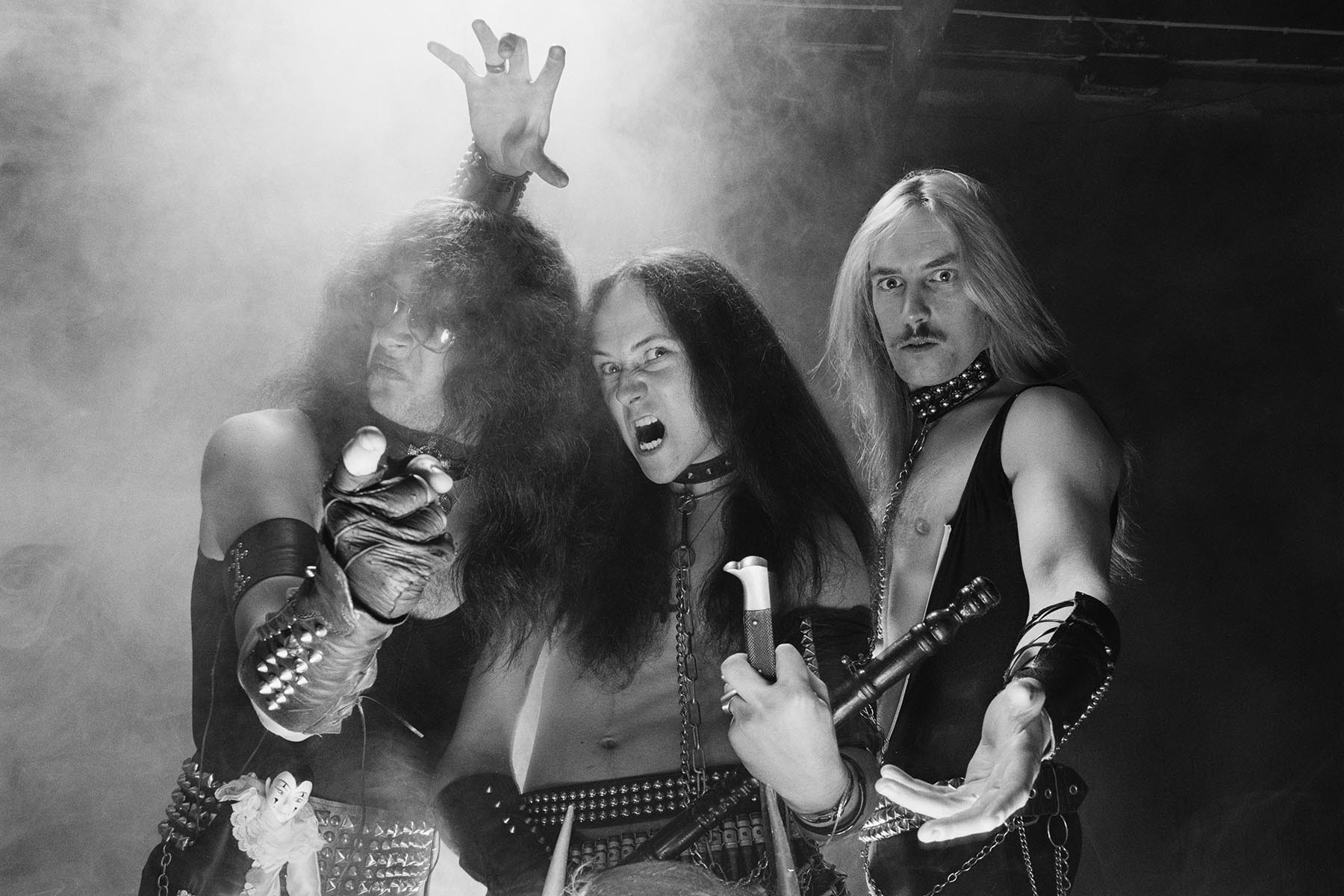 LONDON – 1st SEPTEMBER: English Thrash metal band Venom posed with candles, a cross and skull in London in September 1982. Left to Right: Tony "Abaddon" Bray, Jeffrey "Mantas" Dunn, Conrad "Cronos" LantImage Credit: Fin Costello/Redferns/Getty Images
LONDON – 1st SEPTEMBER: English Thrash metal band Venom posed with candles, a cross and skull in London in September 1982. Left to Right: Tony "Abaddon" Bray, Jeffrey "Mantas" Dunn, Conrad "Cronos" LantImage Credit: Fin Costello/Redferns/Getty Images
Venom, hailing from Newcastle, took blasphemy in heavy metal songs to unprecedented levels in 1981. Rejecting the progressive tendencies of the New Wave of British Heavy Metal (NWOBHM), Venom stripped metal back to its raw, primal form. “Welcome to Hell,” the title track from their debut album, is a diabolically catchy classic, boasting a wicked riff reminiscent of Motörhead’s “Fast” Eddie Clark and lyrics that embraced cartoonish Satanism. While critics recoiled, metal fans embraced Venom’s extreme approach. This raw energy and dark aesthetic laid the groundwork for a generation of Scandinavian black metal bands who would further explore the themes and sounds pioneered by Venom, pushing the boundaries of the genre into darker territories. Venom’s impact on extreme metal subgenres is undeniable, cementing their place in the history of heavy metal songs.
‘Planets Collide,’ Crowbar
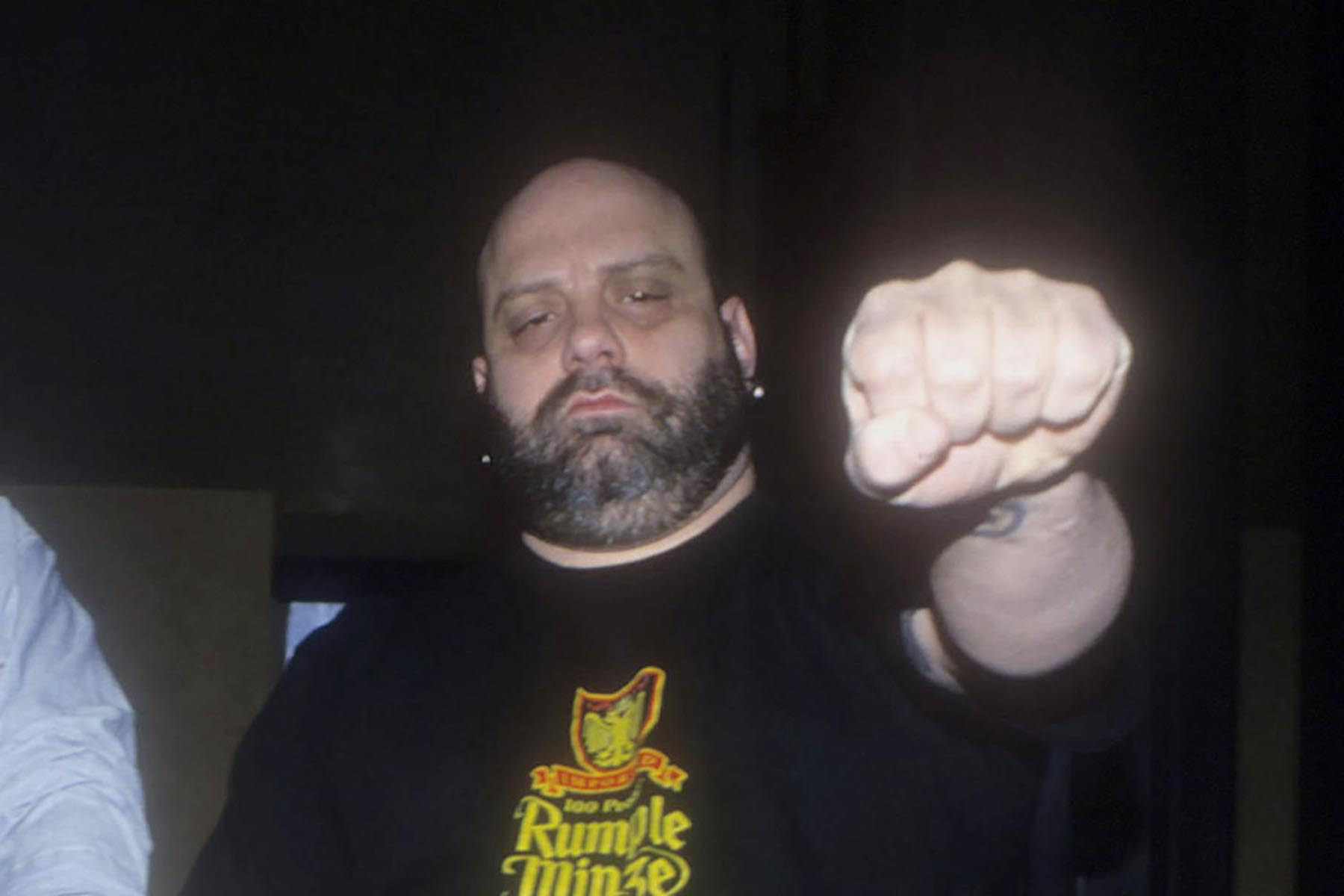 NEW YORK, NEW YORK–JANUARY 10: Heavy Metal Supergroup DownImage Credit: Al Pereira/Michael Ochs Archives/Getty Images
NEW YORK, NEW YORK–JANUARY 10: Heavy Metal Supergroup DownImage Credit: Al Pereira/Michael Ochs Archives/Getty Images
Crowbar, emerging from the vibrant New Orleans metal scene of the early 1990s, initially established themselves with a hardcore-infused sound. However, “Planets Collide,” from their 1998 album Odd Fellows Rest, showcased a different dimension of the band. Guitarist-vocalist Kirk Windstein revealed a melodic sensibility, influenced by his appreciation for 1970s AM gold, resulting in a hazy, melodic sludge-metal sound. Trading his signature bark for a gravelly croon, Windstein’s lyrics in “Planets Collide” delve into personal struggles, chronicling his sister’s battle with substance abuse. This track is considered a pioneering sludge-metal power ballad, setting the stage for Crowbar’s signature “heavy, emotional music” style. “Planets Collide” demonstrates the versatility within heavy metal songs, showcasing how even the heaviest genres can incorporate emotional depth and melodic complexity.
‘Executioner’s Tax (Swing of the Axe),’ Power Trip
 LOS ANGELES, CA – OCTOBER 24: Riley Gale of the Hard Rock Band Power Trip performs at the Loudwire Music Awards at The Novo by Microsoft on October 24, 2017 in Los Angeles, California. (Photo by Harmony Gerber/Getty Images)Image Credit: Harmony Gerber/Getty Images
LOS ANGELES, CA – OCTOBER 24: Riley Gale of the Hard Rock Band Power Trip performs at the Loudwire Music Awards at The Novo by Microsoft on October 24, 2017 in Los Angeles, California. (Photo by Harmony Gerber/Getty Images)Image Credit: Harmony Gerber/Getty Images
Power Trip embodied a throwback aesthetic, drawing inspiration from the golden era of crossover thrash and hardcore. “Executioner’s Tax (Swing of the Axe),” from their 2017 album Nightmare Logic, transcends mere retro imitation, becoming a modern anthem of ferocious intensity. Frontman Riley Gale’s lyrics confront the numbing realities of modern life, delivered with potent aggression. Following Gale’s untimely passing in 2020, numerous cover versions of “Swing of the Axe” emerged, solidifying its status as a contemporary heavy metal standard. The song’s impact and enduring appeal highlight how heavy metal songs can blend classic influences with modern relevance, creating powerful and lasting anthems for new generations of fans.
‘43% Burnt,’ The Dillinger Escape Plan
 Ben Weinman of The Dillinger Escape Plan during Dillinger Escape Plan in Concert – August 2, 2006 at Bowery Ballroom in New York City, New York, United States. (Photo by Michael Loccisano/FilmMagic)Image Credit: Michael Loccisano/FilmMagic
Ben Weinman of The Dillinger Escape Plan during Dillinger Escape Plan in Concert – August 2, 2006 at Bowery Ballroom in New York City, New York, United States. (Photo by Michael Loccisano/FilmMagic)Image Credit: Michael Loccisano/FilmMagic
The Dillinger Escape Plan defied musical boundaries by fusing the complexity of progressive music with the raw fury of hardcore punk. “43% Burnt,” from their groundbreaking 1999 debut Calculating Infinity, became a defining track for the mathcore movement. The song’s brilliance lies in its dynamic contrast between groovy, head-nodding sections and frenetic, chaotic passages featuring odd-time signatures and jazz-fusion influences. Guitarist Ben Weinman described the band’s approach as aiming to create technical music with the impact of a “machine gun hitting you in the chest.” “43% Burnt” exemplifies this approach, influencing countless bands and showcasing the innovative potential within heavy metal songs to blend technicality with sheer aggression.
‘Yeah Right,’ Girlschool
 CANADA – JULY 01: Photo of GIRLSCHOOL (Photo by Peter Noble/Redferns)Image Credit: Peter Noble/Redferns/Getty Images
CANADA – JULY 01: Photo of GIRLSCHOOL (Photo by Peter Noble/Redferns)Image Credit: Peter Noble/Redferns/Getty Images
Girlschool, combining NWOBHM energy with classic rock and roll swagger, delivered a defiant anthem with their 1980 single “Yeah Right.” The song’s message of resilience and self-belief in the face of negativity is timeless. However, its impact is amplified by being performed by an all-female band in a male-dominated genre, at a time when female musicians in metal were still a relative rarity. Kelly Johnson’s searing guitar leads further enhance the track’s power. “Yeah Right” is a testament to the empowering message that heavy metal songs can convey, especially when challenging gender norms and expectations within the music industry.
‘Davidian,’ Machine Head
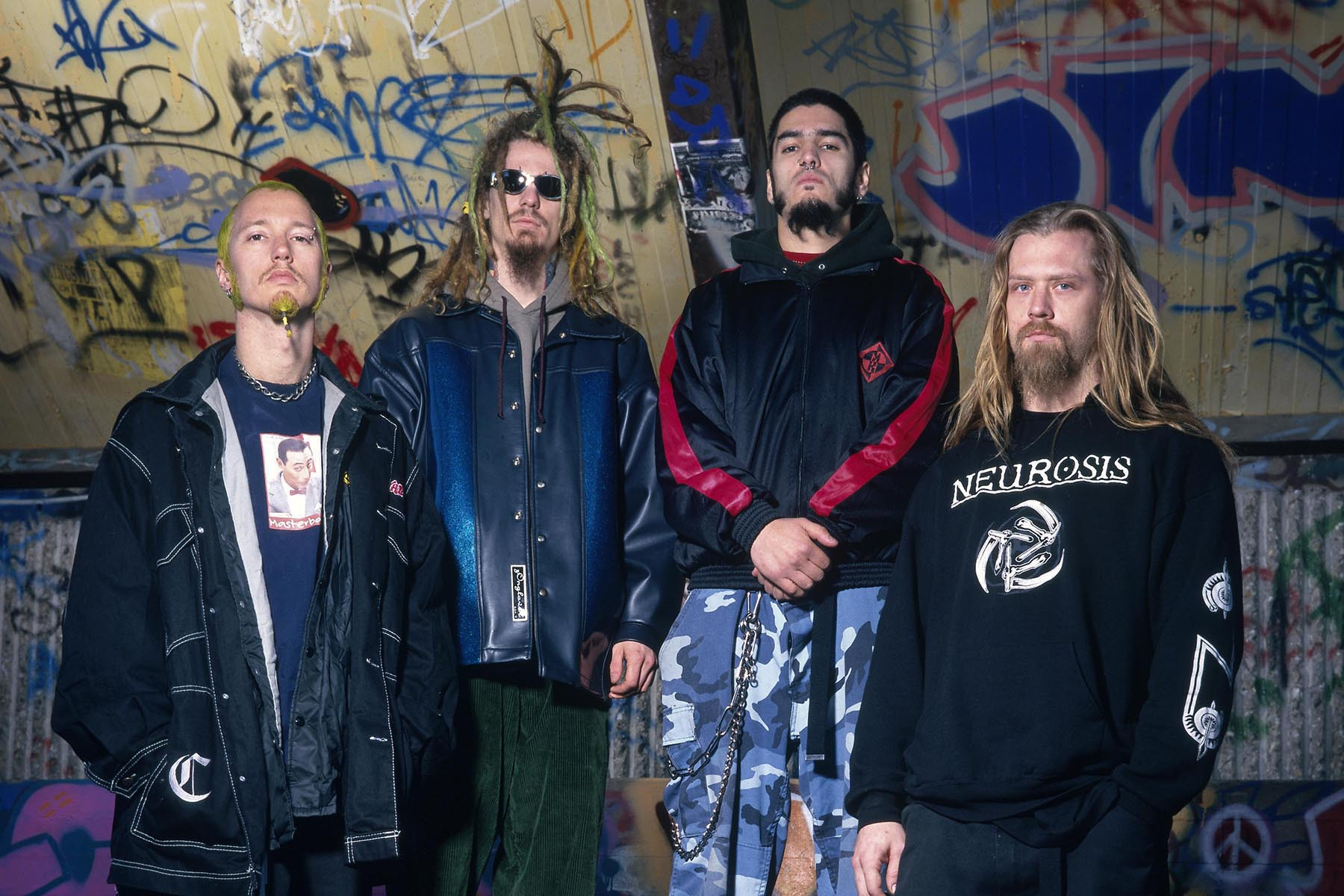 UNSPECIFIED – JANUARY 01: Photo of MACHINE HEAD and Robert FLYNN and Adam DUCE and Logan MADER and Dave McCLAIN; Posed group portrait L-R Dave McClain, Logan Mader, Robert Flynn and Adam Duce (Photo by Mick Hutson/Redferns)Image Credit: Mick Hutson/Redferns/Getty Images
UNSPECIFIED – JANUARY 01: Photo of MACHINE HEAD and Robert FLYNN and Adam DUCE and Logan MADER and Dave McCLAIN; Posed group portrait L-R Dave McClain, Logan Mader, Robert Flynn and Adam Duce (Photo by Mick Hutson/Redferns)Image Credit: Mick Hutson/Redferns/Getty Images
Robb Flynn, a veteran of the Bay Area thrash scene, made his most significant mark on heavy metal with Machine Head, founded in 1991. “Davidian,” the opening track from their 1994 debut Burn My Eyes, defined the sound of 1990s heaviness. It combines a seismic groove with an almost industrial-sounding riff, blending menacing power chords and piercing harmonics. Inspired by the 1993 Waco siege, “Davidian’s” lyrics about violent catharsis resonate with themes of overcoming oppression. The song’s powerful groove and socially conscious lyrics illustrate how heavy metal songs can address real-world events and emotions with raw intensity and musical innovation.
‘In the Meantime,’ Helmet
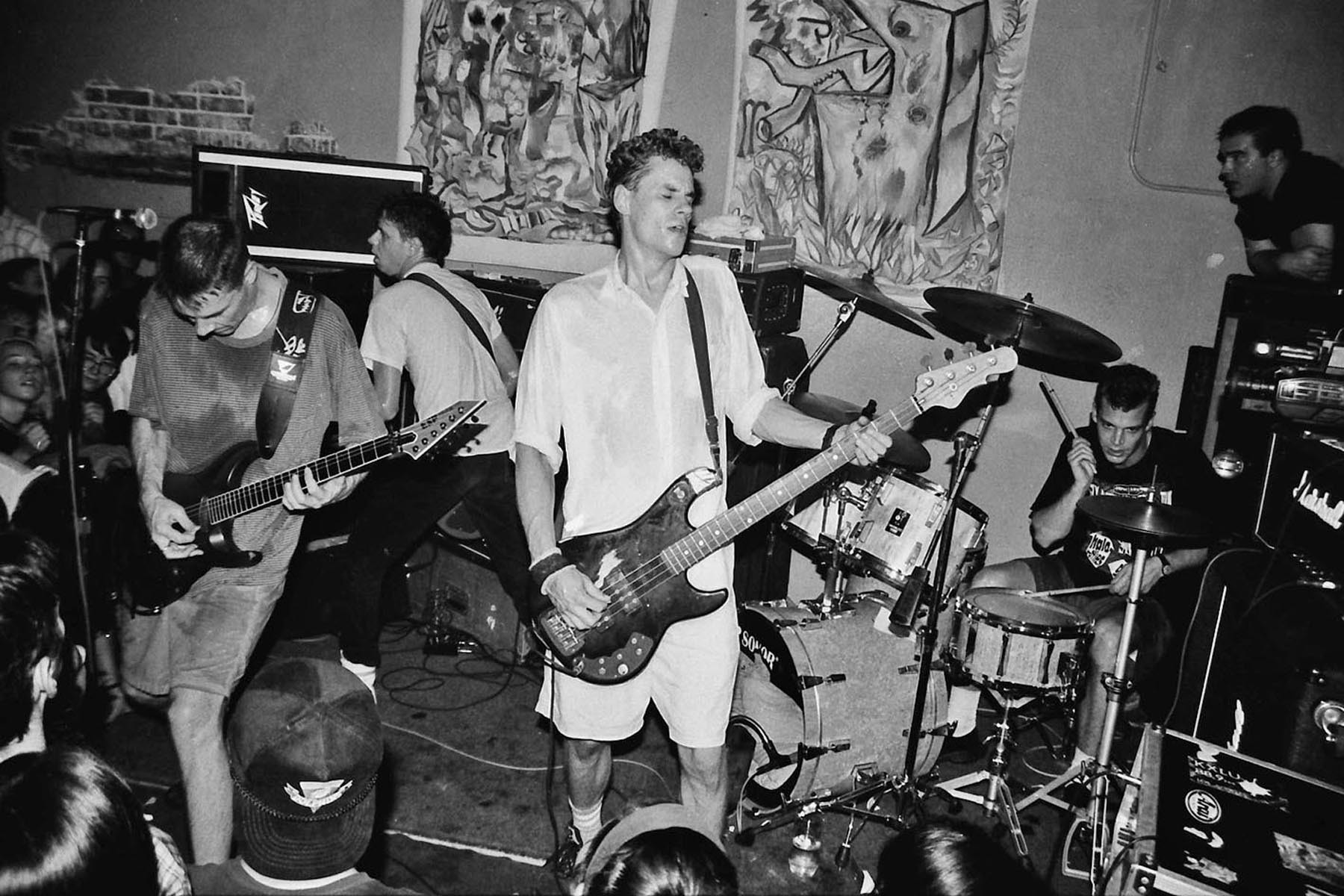 LOS ANGELES- November 13: Guitarist and vocalist Page Hamilton, bassist Henry Bogdan, guitarist Peter Mengede, and drummer John Stanier perform in Helmet at Jabberbaw on November 13, 1991 in Los Angeles. (Photo: Lindsay Brice/Getty Images)Image Credit: Lindsay Brice/Getty Images
LOS ANGELES- November 13: Guitarist and vocalist Page Hamilton, bassist Henry Bogdan, guitarist Peter Mengede, and drummer John Stanier perform in Helmet at Jabberbaw on November 13, 1991 in Los Angeles. (Photo: Lindsay Brice/Getty Images)Image Credit: Lindsay Brice/Getty Images
Helmet emerged from the noise-rock underground, signing to Amphetamine Reptile and releasing the stark, powerful Strap It On in 1990. Their sound fused orchestrated noise, metal precision, complex time signatures, and massive riffs, all anchored by singer-guitarist Page Hamilton’s commanding vocals. Hamilton cited influences ranging from AC/DC and Sonic Youth to Led Zeppelin, explaining Helmet’s unique sonic blend. “In the Meantime,” from their 1992 album Meantime, became an unlikely MTV hit amidst the post-Nirvana alternative rock boom. Its “glorious brute force” and innovative sound demonstrate the unexpected crossover potential of heavy metal songs and their ability to break into mainstream consciousness.
‘Hammer Smashed Face,’ Cannibal Corpse
 Cannibal Corpse (Photo by Steve Eichner/WireImage) *** Local Caption ***Image Credit: Steve Eichner/WireImage
Cannibal Corpse (Photo by Steve Eichner/WireImage) *** Local Caption ***Image Credit: Steve Eichner/WireImage
Cannibal Corpse pushed the boundaries of extreme metal to genuinely disturbing levels in the late 1980s and early 1990s. Their songs often resembled “aural snuff films,” exploring graphic and violent themes. “Hammer Smashed Face,” perhaps their most infamous track, is a relentlessly brutal song about exactly what the title suggests. Despite its extreme lyrical content, the song features a surprisingly catchy stop-time intro and technically impressive musicianship. Vocalist Chris Barnes’ guttural growls further amplify the song’s disturbing atmosphere. Ironically, “Hammer Smashed Face” gained mainstream exposure through its inclusion in the Jim Carrey comedy Ace Ventura: Pet Detective, introducing death metal to a wider, unsuspecting audience. This unexpected pop culture moment underscores the sometimes contradictory relationship between extreme heavy metal songs and mainstream visibility.
‘All We Are,’ Warlock
 UNITED KINGDOM – JANUARY 01: Posed group portrait of Warlock with lead singer Doro Pesch (centre) in 1985. (Photo by Fin Costello/Redferns)Image Credit: Fin Costello/Redferns/Getty Images
UNITED KINGDOM – JANUARY 01: Posed group portrait of Warlock with lead singer Doro Pesch (centre) in 1985. (Photo by Fin Costello/Redferns)Image Credit: Fin Costello/Redferns/Getty Images
Doro Pesch, frontwoman of Warlock, is often hailed as the “Metal Goddess.” “All We Are,” co-written by Pesch, became a global anthem with its thunderous, fist-pumping energy and shout-along chorus. Pesch’s empowering lyrics and multi-octave vocals resonated with metal fans worldwide. “All We Are” solidified Pesch’s status as a metal icon and a trailblazer for women in metal. The song’s enduring popularity and empowering message demonstrate how heavy metal songs can transcend geographical and cultural boundaries, becoming anthems of unity and strength.
‘Pull Me Under,’ Dream Theater
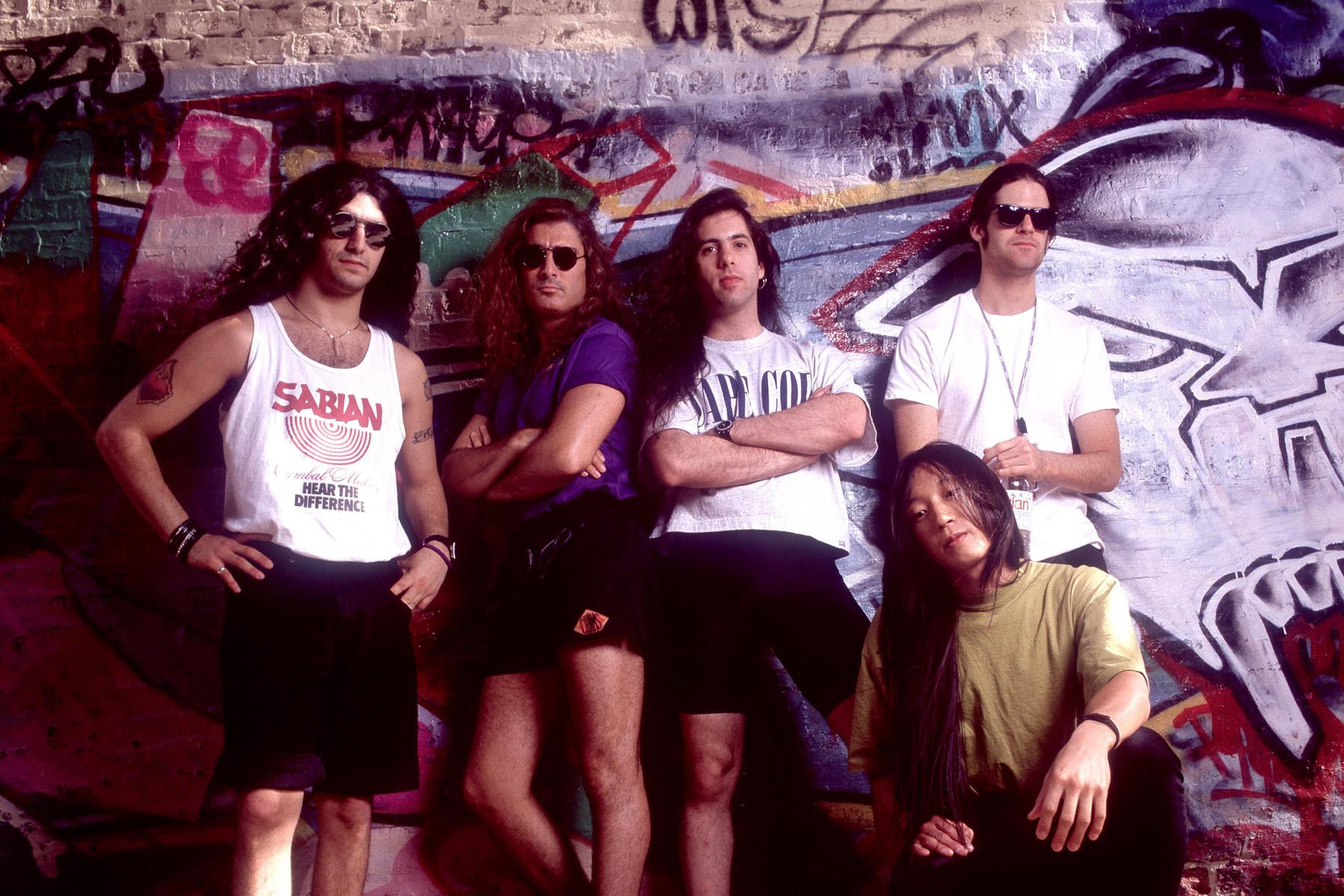 Group portrait of American music group Dream Theater as they pose at the Vic Theater, Chicago, Illinois, June 6, 1993. (Photo by Paul Natkin/Getty Images)Image Credit: Paul Natkin/Getty Images
Group portrait of American music group Dream Theater as they pose at the Vic Theater, Chicago, Illinois, June 6, 1993. (Photo by Paul Natkin/Getty Images)Image Credit: Paul Natkin/Getty Images
Dream Theater emerged as leaders of American progressive metal in the 1990s, following in the footsteps of bands like Queensrÿche and Fates Warning. In a musical landscape dominated by grunge’s raw simplicity, Dream Theater embraced technical virtuosity. “Pull Me Under,” their debut single, became an unlikely hit, showcasing their dazzling musicianship. The song is a meticulously crafted epic, featuring Mike Portnoy’s powerful drumming and John Petrucci’s intricate guitar work, drawing comparisons to prog legends like Yes. James LaBrie’s passionate vocals deliver philosophical lyrics inspired by Shakespeare’s Hamlet, making the complex composition surprisingly accessible. “Pull Me Under” proved that technically demanding heavy metal songs could achieve mainstream success, expanding the genre’s reach and demonstrating its artistic ambition.
‘Bring the Noise,’ Public Enemy feat. Anthrax
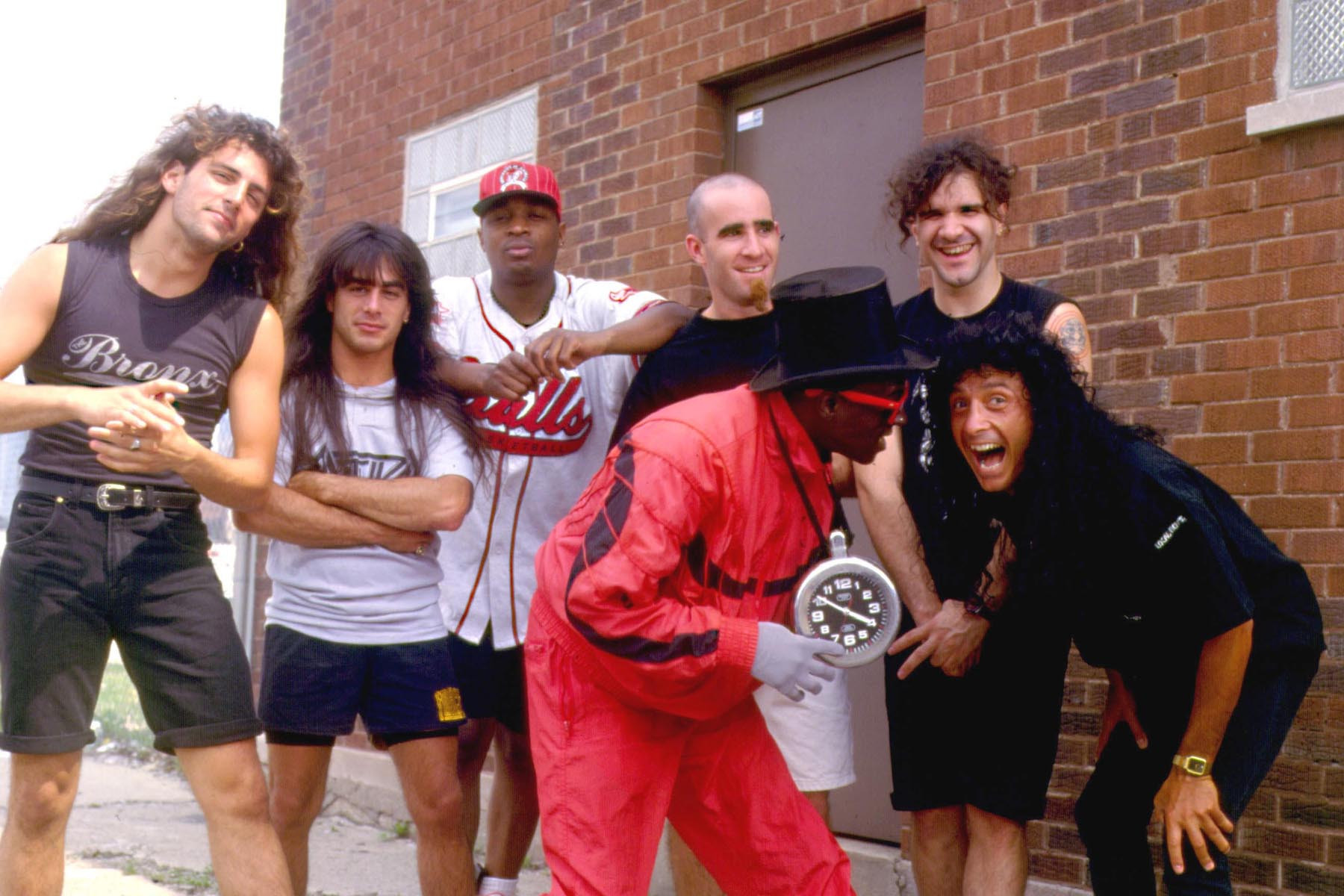 Anthrax and Public Enemy at a video shoot on 6/15/91 in Chicago, Il. (Photo by Paul Natkin/WireImage)Image Credit: Paul Natkin/WireImage
Anthrax and Public Enemy at a video shoot on 6/15/91 in Chicago, Il. (Photo by Paul Natkin/WireImage)Image Credit: Paul Natkin/WireImage
Public Enemy’s “Bring the Noise,” originally a groundbreaking rap track, was reimagined as a metal anthem through a collaboration with Anthrax. Initially skeptical, Chuck D of Public Enemy was convinced by Anthrax drummer Charlie Benante’s demo, which featured inventive guitar interpretations of the original song’s samples and a live drum take on James Brown’s “Funky Drummer” beat. The collaboration led to a groundbreaking rap-metal tour and live performances of the song. “Bring the Noise” is a landmark example of genre fusion, demonstrating the power of heavy metal songs to cross musical boundaries and create unexpected and impactful collaborations. It paved the way for the rap-metal genre and highlighted the shared rebellious spirit between hip-hop and metal.
‘You Can’t Bring Me Down,’ Suicidal Tendencies
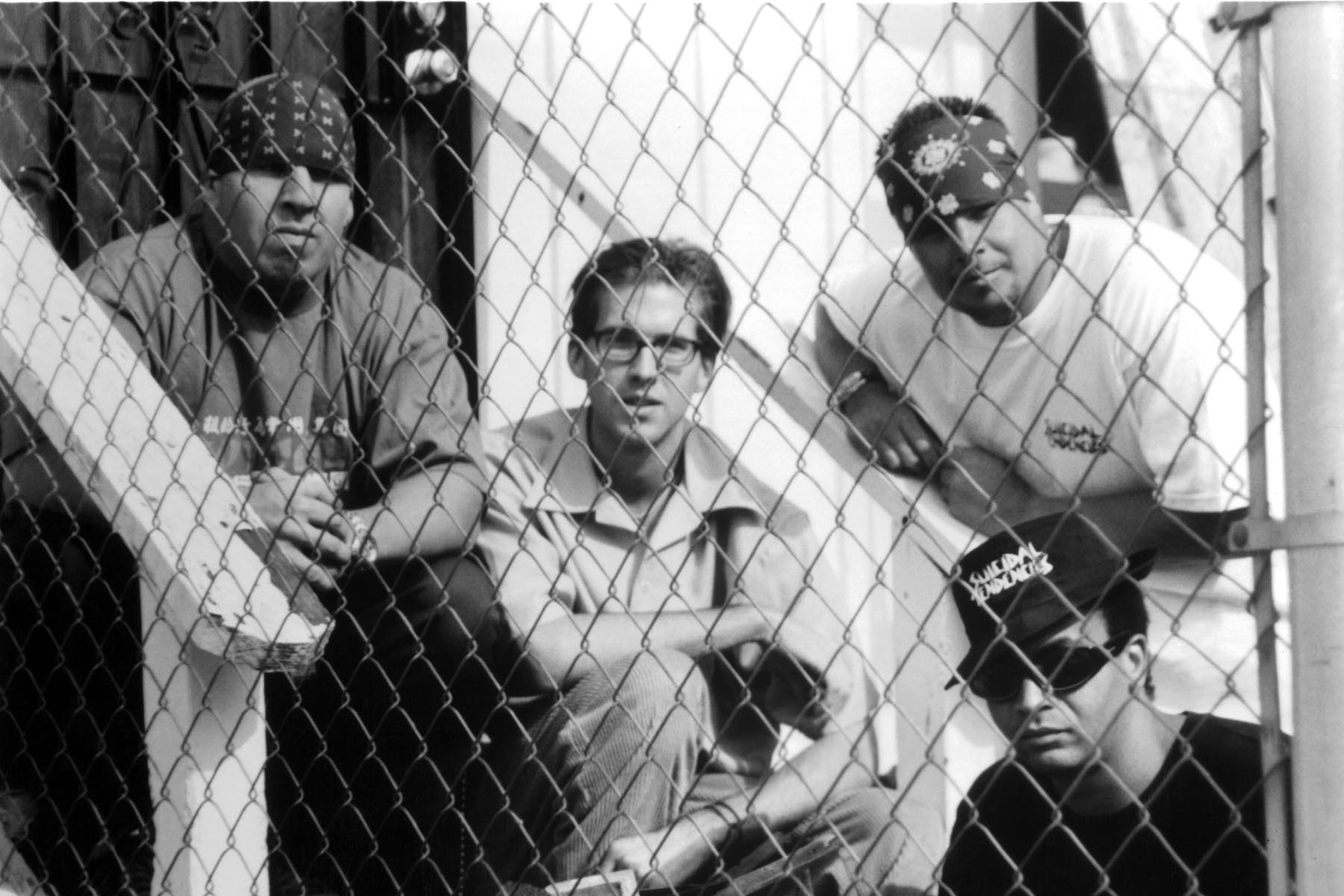 CIRCA 1990: Music group Suicidal Tendencies circa 1990. (Photo by Michael Ochs Archives/Getty Images)Image Credit: Michael Ochs Archives/Getty Images
CIRCA 1990: Music group Suicidal Tendencies circa 1990. (Photo by Michael Ochs Archives/Getty Images)Image Credit: Michael Ochs Archives/Getty Images
Suicidal Tendencies evolved from hyperactive skate punks to a sophisticated metal act in the 1990s. “You Can’t Bring Me Down” solidified this transformation. Penned by Mike Muir and guitarist Rocky George, the song builds from brooding clean-toned arpeggios to furious uptempo shredding. Muir’s lyrics embody all-purpose defiance, delivered with his signature amped-up energy and one-liners. “You Can’t Bring Me Down” became a quintessential middle-finger anthem, showcasing how heavy metal songs can express rebellion and resilience with both musical and lyrical force.
‘This Time,’ Life of Agony
 SAYREVILLE, NJ – SEPTEMBER 13: Singer Keith Caputo of Life of Agony performs at the Starland Ballroom on September 13, 2014 in Sayreville, New Jersey. (Photo by Michael Loccisano/Getty Images)Image Credit: Michael Loccisano/Getty Images
SAYREVILLE, NJ – SEPTEMBER 13: Singer Keith Caputo of Life of Agony performs at the Starland Ballroom on September 13, 2014 in Sayreville, New Jersey. (Photo by Michael Loccisano/Getty Images)Image Credit: Michael Loccisano/Getty Images
Life of Agony’s River Runs Red, a 1993 classic, is a concept album chronicling a young man’s week of turmoil. Album opener “This Time” sets the stage, detailing the protagonist’s frustration with his unreliable father. The song showcases Life of Agony’s unique blend of burly, hardcore-esque riffs and Mina Caputo’s emotive, melody-driven vocals. Caputo’s passionate delivery of lyrics about intergenerational angst creates a wrenching yet cathartic experience. “This Time” exemplifies how heavy metal songs can explore personal and emotional narratives with depth and musical intensity, moving beyond typical genre tropes.
‘Slaughter of the Soul,’ At the Gates
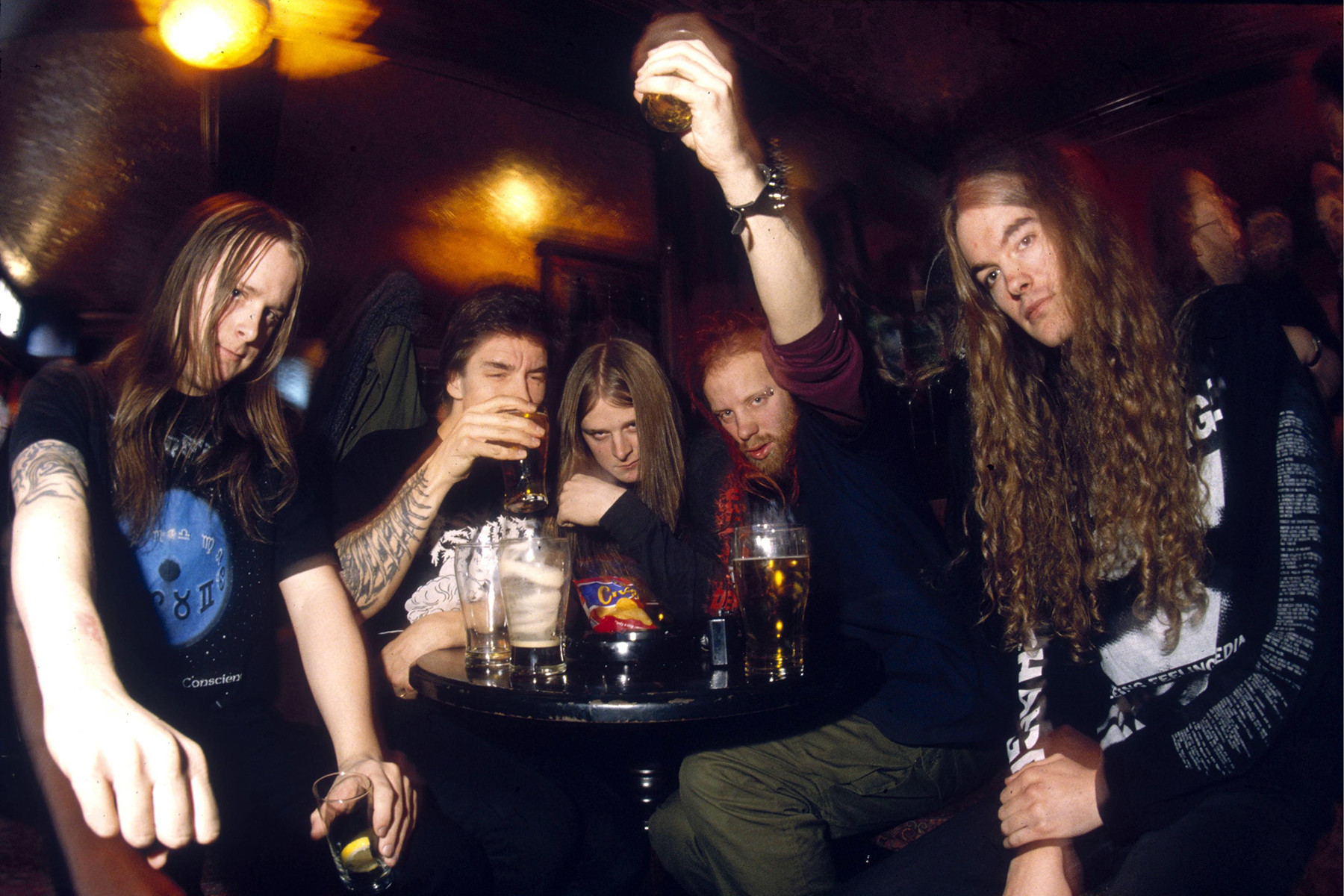 UNITED KINGDOM – JANUARY 01: Photo of Martin LARSSON and Tomas LINDBERG and Adrian ERLANDSSON and Anders BJORLER and AT THE GATES and Jonas BJORLER; Group portrait in the pub, drink L-R Anders Bjorler, Adrian Erlandsson, Jonas Bjorler . Tomas Lindberg far right (Photo by Mick Hutson/Redferns)Image Credit: Mick Hutson/Redferns/Getty Images
UNITED KINGDOM – JANUARY 01: Photo of Martin LARSSON and Tomas LINDBERG and Adrian ERLANDSSON and Anders BJORLER and AT THE GATES and Jonas BJORLER; Group portrait in the pub, drink L-R Anders Bjorler, Adrian Erlandsson, Jonas Bjorler . Tomas Lindberg far right (Photo by Mick Hutson/Redferns)Image Credit: Mick Hutson/Redferns/Getty Images
At the Gates, from Gothenburg, Sweden, defined the city’s melodic death metal scene with their 1995 masterpiece Slaughter of the Soul. The title track exemplifies the album’s intensity, driven by frontman Tomas Lindberg’s tormented screams. Lindberg shifted lyrical focus from fantasy themes to real-life social issues, adding a hardcore edge to the band’s sound. Despite breaking up shortly after the album’s release, At the Gates’ influence remains immense, particularly on American metalcore bands. “Slaughter of the Soul” is a pivotal example of how heavy metal songs can evolve subgenres, creating lasting legacies and inspiring subsequent generations of musicians.
’21st Century Schizoid Man,’ King Crimson
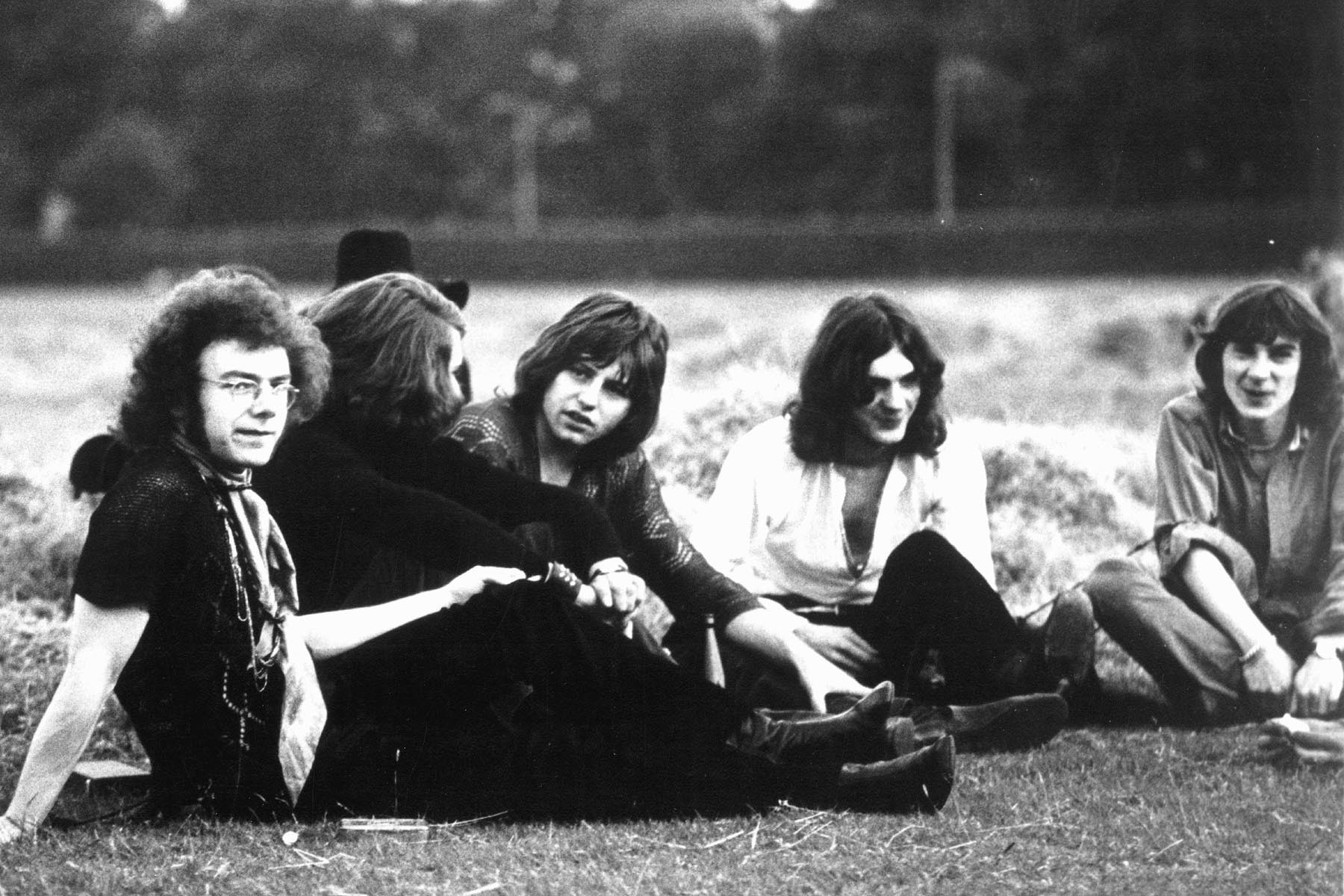 1969: (L-R) Guitarist Robert Fripp, drummer Michael Giles, singer and guitarist Greg Lake, multi-instrumental Ian McDonald and lyricist Peter Sinfield which consisted of the first lineup of the English rock band King Crimson, in 1969.Image Credit: Willie Christie/Michael Ochs Archives/Getty Images
1969: (L-R) Guitarist Robert Fripp, drummer Michael Giles, singer and guitarist Greg Lake, multi-instrumental Ian McDonald and lyricist Peter Sinfield which consisted of the first lineup of the English rock band King Crimson, in 1969.Image Credit: Willie Christie/Michael Ochs Archives/Getty Images
King Crimson’s “21st Century Schizoid Man,” from their 1969 debut In the Court of the Crimson King, features a proto-metal riff considered by many to be one of the greatest. The doomy, swaggering riff, enhanced by Robert Fripp’s guitar work and Michael Giles’ drumming, was lauded by Pete Townshend as “the heaviest riff.” Peter Sinfield’s dark, anti-war lyrics and the overdriven effect on Greg Lake’s vocals amplify the song’s foreboding mood. Even the song’s instrumental passages contribute to the sense of apocalyptic terror. “21st Century Schizoid Man” demonstrates the early roots of heavy metal songs, showcasing how progressive rock elements could be fused with heavy riffs to create something both innovative and intensely powerful.
‘There Goes the Neighborhood,’ Body Count
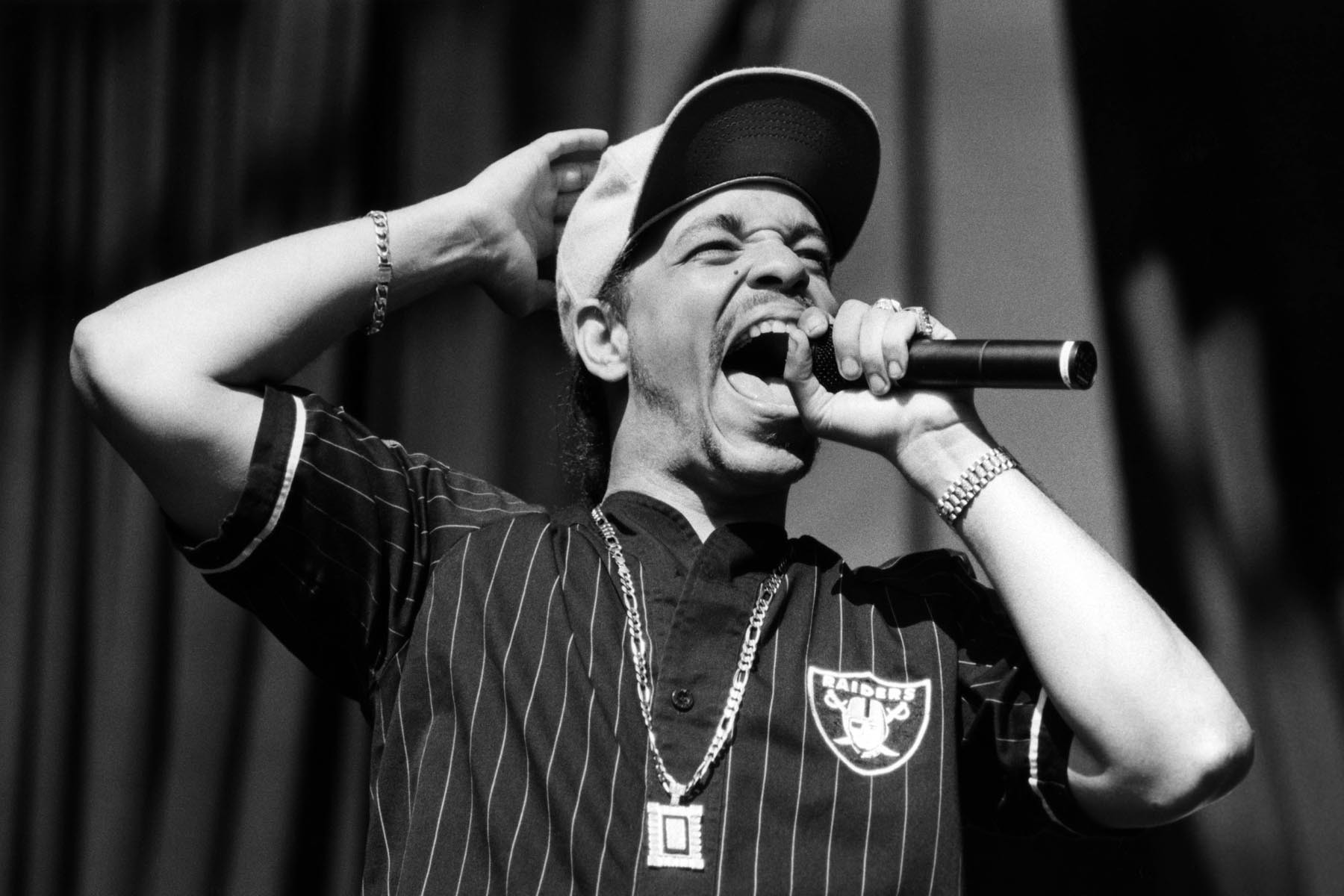 UNITED STATES – JANUARY 01: Photo of BODY COUNT and ICE T; Irvine Meadows, California (Photo by Donna Santisi/Redferns)Image Credit: Donna Santisi/Redferns/Getty Images
UNITED STATES – JANUARY 01: Photo of BODY COUNT and ICE T; Irvine Meadows, California (Photo by Donna Santisi/Redferns)Image Credit: Donna Santisi/Redferns/Getty Images
Ice-T’s Body Count became a controversial force in metal, particularly with their song “Cop Killer.” However, “There Goes the Neighborhood,” from the same album, presented a more direct challenge by being a metal song performed by Black musicians directly addressing racism within the metal community. Ice-T’s lyrics mock racist attitudes, questioning the assumption that “rock is just for whites.” Body Count’s musicianship showcases mastery of various metal styles, from Sabbath-esque riffs to thrash and Van Halen-style shredding. “There Goes the Neighborhood” is a powerful statement about diversity and inclusion within heavy metal songs, challenging racial stereotypes and asserting the place of Black artists within the genre.
‘Thunder Kiss ’65,’ White Zombie
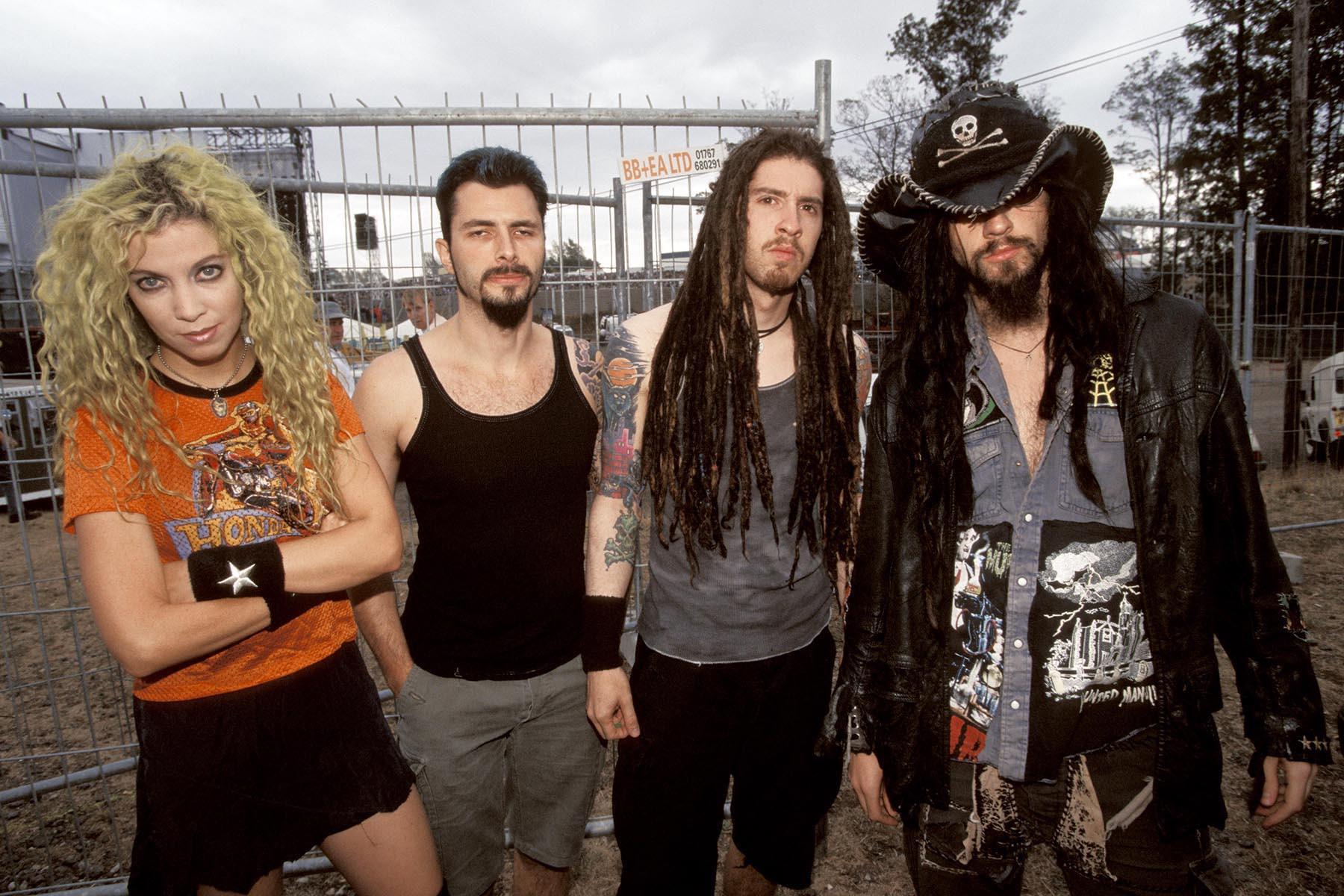 UNSPECIFIED – JANUARY 01: Photo of WHITE ZOMBIE (Photo by Mick Hutson/Redferns)Image Credit: Mick Hutson/Redferns/Getty Images
UNSPECIFIED – JANUARY 01: Photo of WHITE ZOMBIE (Photo by Mick Hutson/Redferns)Image Credit: Mick Hutson/Redferns/Getty Images
White Zombie’s “Thunder Kiss ’65” became their mainstream breakthrough in the grunge era. Rob Zombie described it as “our most normal song,” yet its uncanny appeal stemmed from its simple groove layered with noise-scene elements. Police sirens and B-movie samples create a distinctive atmosphere, while Zombie’s lyrics evoke a creation myth of an art-school outcast embracing Harley Davidsons, horror, and Satanism. “Thunder Kiss ’65” announced Rob Zombie’s arrival as a pop culture figure and demonstrated how heavy metal songs could incorporate diverse influences and unconventional sounds to achieve mainstream success.
‘World Eater,’ Bolt Thrower
 Image Credit: Earache Records
Image Credit: Earache Records
Bolt Thrower, British death metal stalwarts, delivered a sobering depiction of war in “World Eater.” Despite its grim subject matter, the song functions as a triumphant call to arms, driven by Bolt Thrower’s signature gallop, heavy riffs, and Karl Willetts’ guttural vocals. A squealing solo and blast beats add to the chaotic intensity. “World Eater” exemplifies Bolt Thrower’s uncompromising approach and their dedication to creating authentic, non-commercial heavy metal songs. Their commitment to artistic integrity, even at the expense of mainstream appeal, highlights the genre’s dedication to authenticity and artistic vision.
‘Spit,’ Kittie
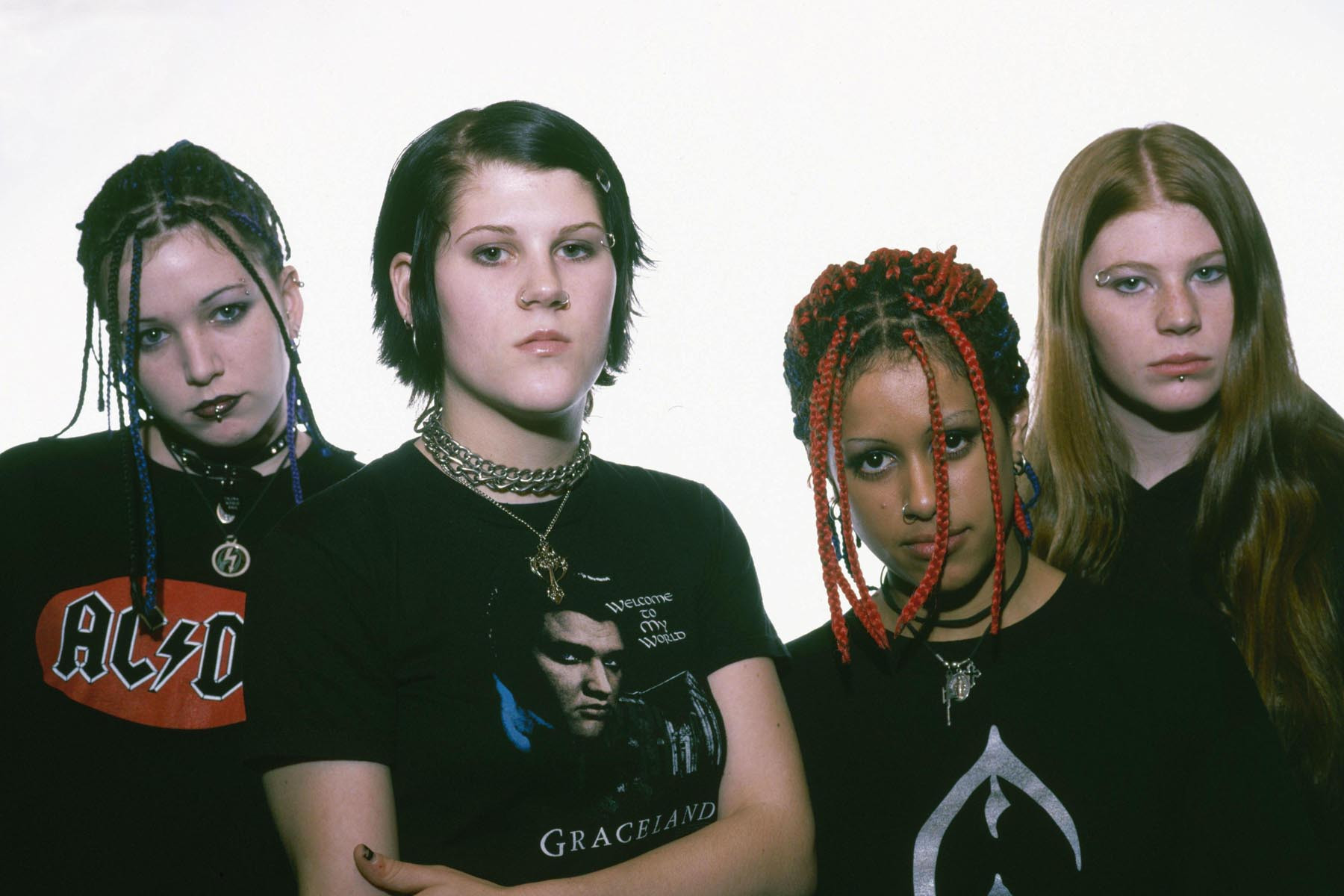 UNSPECIFIED – JUNE 01: Photo of Mercedes LANDER and KITTIE and Talena ATFIELD and Morgan LANDER and Fallon BOWMAN; L-R: Talena Atfield, Morgan Lander, Fallon Bowman, Mercedes Lander – posed, studio, group shot (Photo by Mick Hutson/Redferns)Image Credit: Mick Hutson/Redferns/Getty Images
UNSPECIFIED – JUNE 01: Photo of Mercedes LANDER and KITTIE and Talena ATFIELD and Morgan LANDER and Fallon BOWMAN; L-R: Talena Atfield, Morgan Lander, Fallon Bowman, Mercedes Lander – posed, studio, group shot (Photo by Mick Hutson/Redferns)Image Credit: Mick Hutson/Redferns/Getty Images
Kittie, an all-female band bursting onto the metal scene in 2000, faced immediate scrutiny due to their gender. Their debut album Spit showcased a raw blend of thrash, grunge, death metal, and adolescent rage. The title track, “Spit,” is a fiercely heavy proto-feminist anthem targeting misogyny. Written and performed when the band members were teenagers, “Spit” captured youthful anger and empowerment. Kittie’s emergence and the impact of “Spit” challenged gender biases within heavy metal and demonstrated the powerful voice of young women within the genre.
‘We’re Not Gonna Take It,’ Twisted Sister
 Portrait of American Heavy Metal singer Dee Snider, of the group Twisted Sister, as he poses backstage at the Rosemont Horizon, Rosemont, Illinois, December 21,1984. (Photo by Paul Natkin/Getty Images)Image Credit: Paul Natkin/Getty Images
Portrait of American Heavy Metal singer Dee Snider, of the group Twisted Sister, as he poses backstage at the Rosemont Horizon, Rosemont, Illinois, December 21,1984. (Photo by Paul Natkin/Getty Images)Image Credit: Paul Natkin/Getty Images
Twisted Sister, after a decade of club gigs, achieved mainstream success with “We’re Not Gonna Take It.” The song features a catchy drum intro reminiscent of Led Zeppelin’s “Rock and Roll” and a phenomenal hook. Dee Snider, drawing inspiration from Alice Cooper’s anthemic songs, aimed to create an anthem of righteous anger. The unforgettable music video, a staple on MTV, amplified the song’s impact. “We’re Not Gonna Take It” became a protest anthem and a defining heavy metal song of the 1980s, showcasing the genre’s capacity for creating both powerful musical statements and visually engaging content.
‘My Own Summer (Shove It),’ Deftones
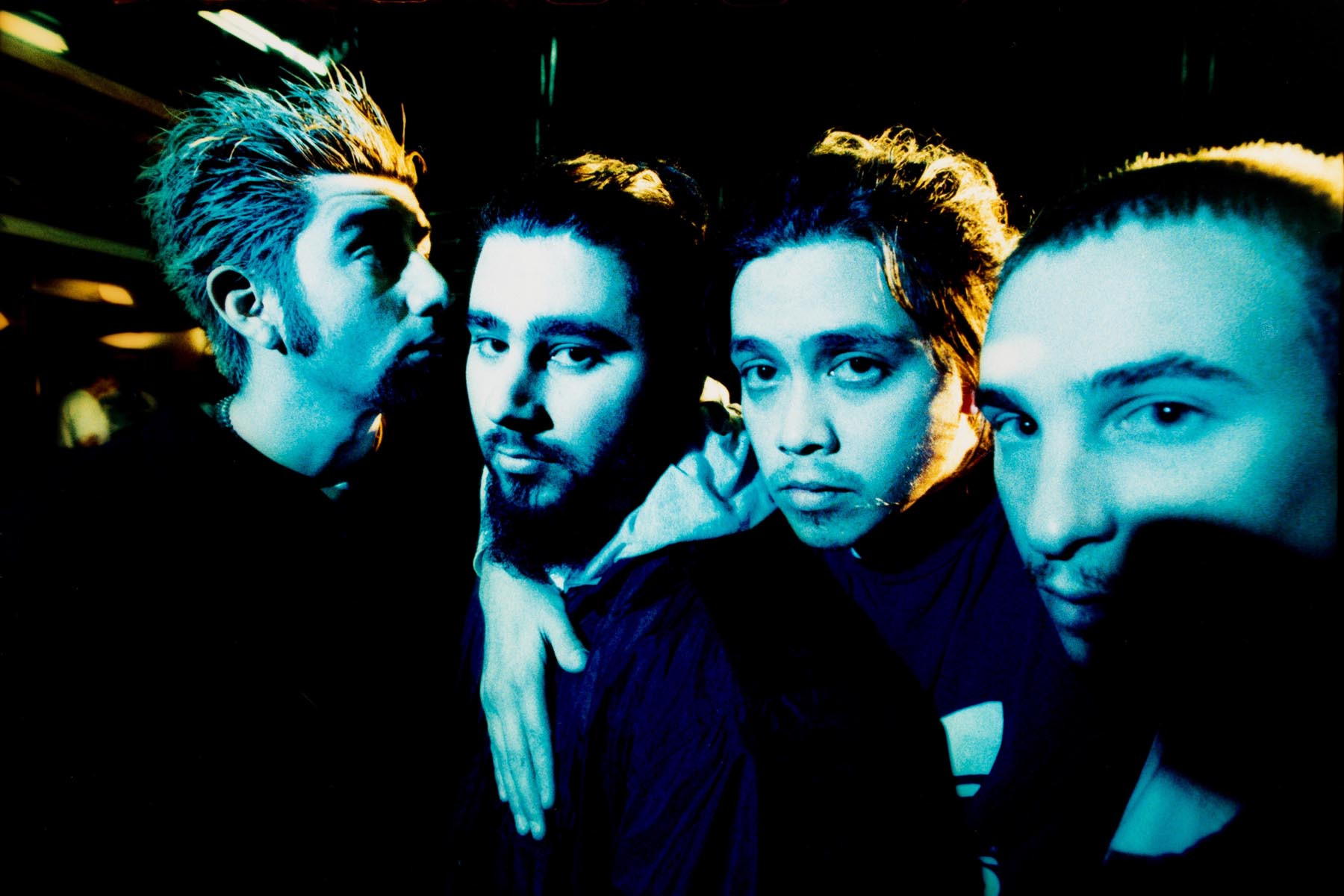 Deftones, portrait, Melkweg, Amsterdam, Netherlands, 13th October 1997. (Photo by Niels van Iperen/Getty Images)Image Credit: Niels van Iperen/Getty Images
Deftones, portrait, Melkweg, Amsterdam, Netherlands, 13th October 1997. (Photo by Niels van Iperen/Getty Images)Image Credit: Niels van Iperen/Getty Images
Deftones’ “My Own Summer (Shove It)” was their breakthrough hit and a defining track of the nu metal genre. From their sophomore album Around the Fur, the song is a masterclass in tension-building, featuring pulsing guitars and Chino Moreno’s dynamic vocals. At a time of raw anger in nu metal, Deftones distinguished themselves with complex and introspective lyrics. “My Own Summer (Shove It)” exemplified the nu metal sound and Deftones’ unique lyrical and musical approach, solidifying their place as innovators within the genre.
‘Balls to the Wall,’ Accept
 The German band Accept, on stage, circa 1980-1985. (Photo by Fin Costello/Redferns/Getty Images)Image Credit: Fin Costello/Redferns/Getty Images
The German band Accept, on stage, circa 1980-1985. (Photo by Fin Costello/Redferns/Getty Images)Image Credit: Fin Costello/Redferns/Getty Images
Accept, German metal band, tapped their manager Gaby Hauke to write lyrics in English, resulting in shocking visions of toxic masculinity. “Balls to the Wall,” the title track from their album, became a Cold War-era anthem. Razor-sharp twin guitars, Udo Dirkschneider’s gravelly vocals, and provocative lyrics created a powerful and unsettling atmosphere. The song’s memorable video and AC/DC-esque riffs made it an instant classic. “Balls to the Wall” demonstrated the international reach of heavy metal songs and how bands from outside English-speaking countries could achieve global success within the genre.
‘Concubine,’ Converge
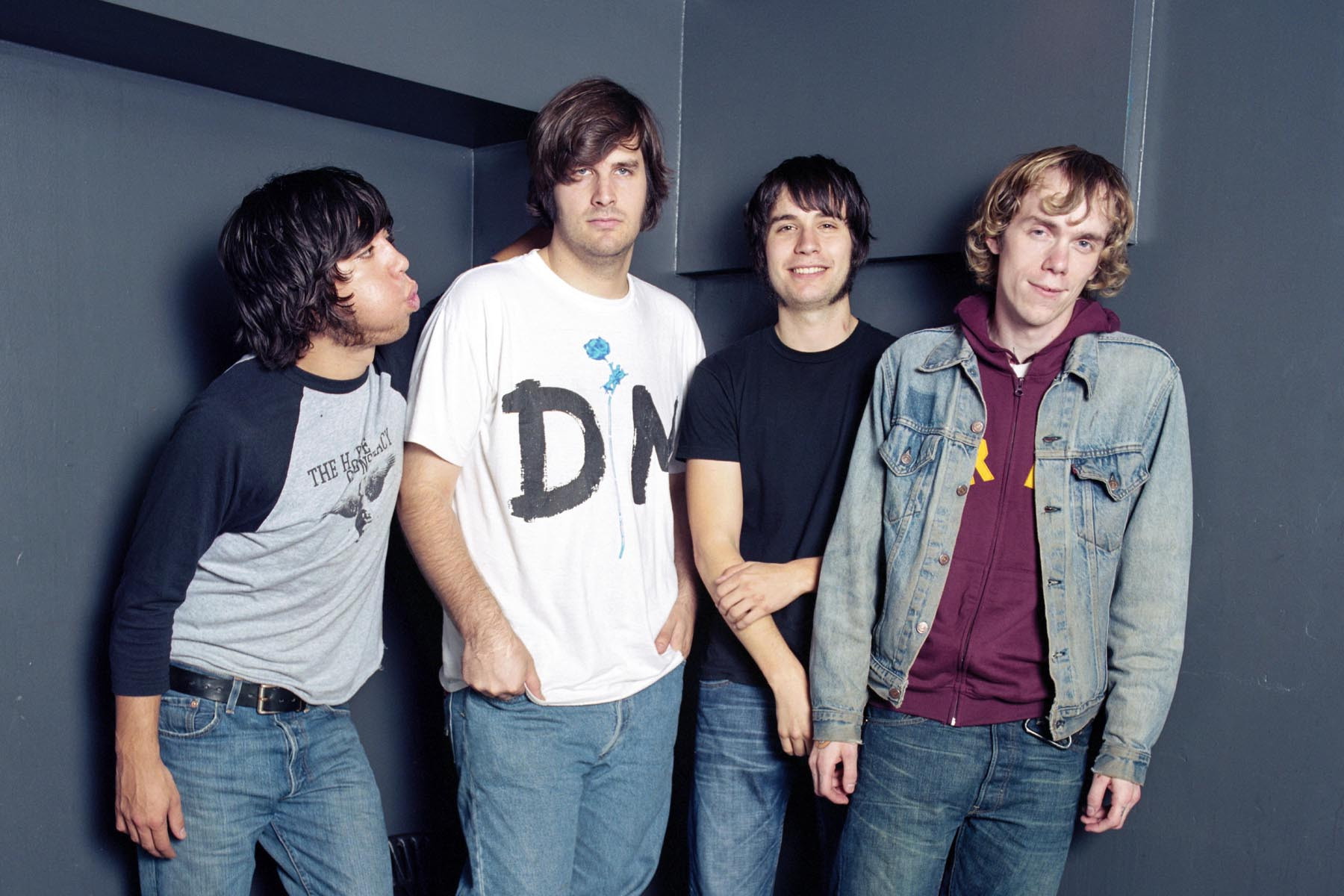 KX618A Converge at the Underworld, Camden, London, England, United Kingdom. on 20th September 02.Image Credit: Edd Westmacott/Alamy
KX618A Converge at the Underworld, Camden, London, England, United Kingdom. on 20th September 02.Image Credit: Edd Westmacott/Alamy
Converge’s “Concubine” is a brutalist metalcore track born from the wreckage of a dysfunctional relationship. Despite its brevity (80 seconds), “Concubine” is a blueprint for the emotional catharsis of their 2001 album Jane Doe. Evolving from the hardcore punk scene, Converge pioneered metallic mathcore, featuring Jacob Bannon’s intense vocals and off-kilter rhythms. The song’s raw emotional intensity and innovative blend of hardcore and metal elements showcase the genre’s capacity for extreme expression. The anecdote of recording near James Taylor highlights the contrasting musical worlds and the intense energy of Converge’s heavy metal songs.
‘Jesus Christ Pose,’ Soundgarden
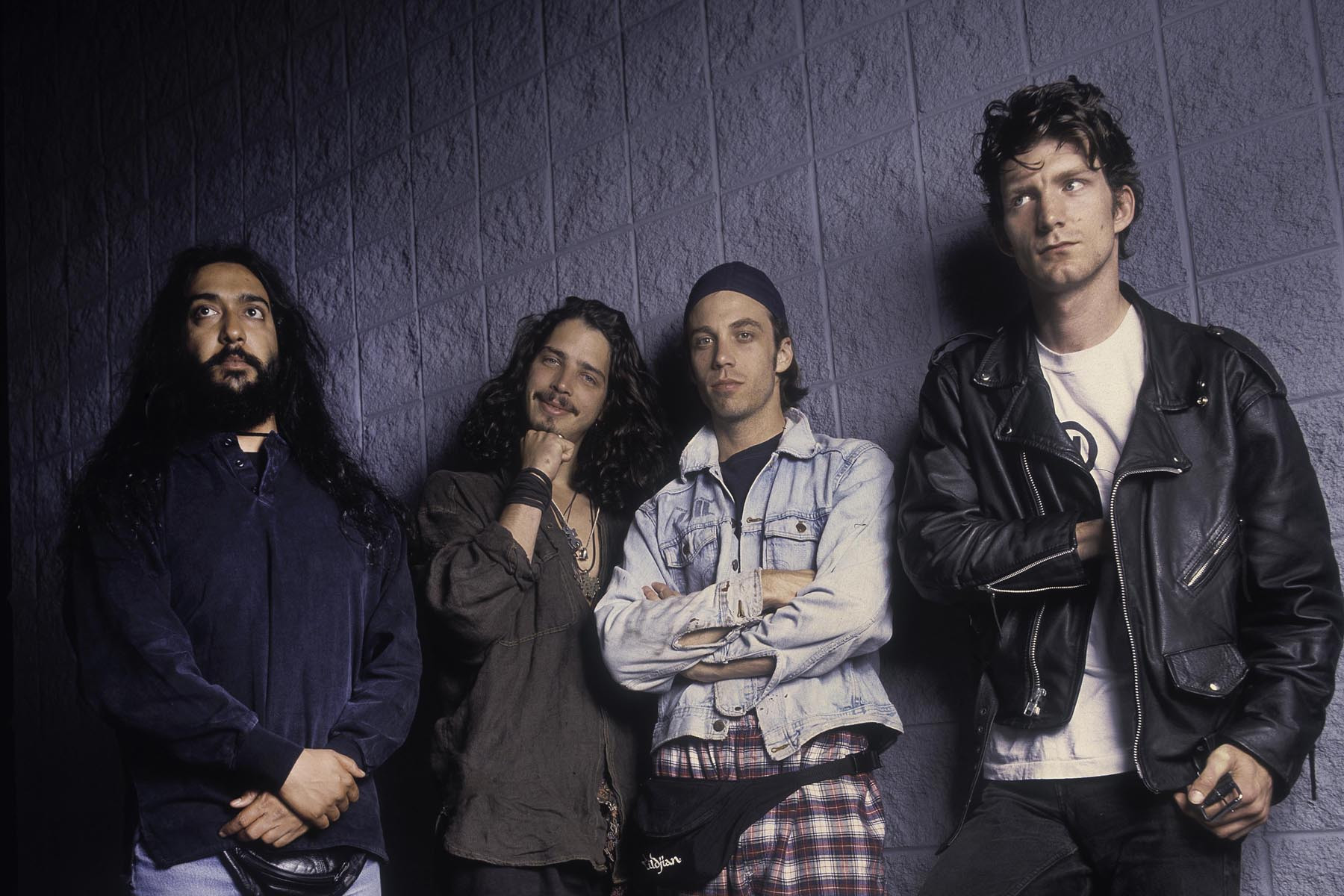 Group portrait of members of the Rock band Soundgarden as they pose at the World Music Theater, Tinley Park, Illinois, August 2, 1992. Pictured are, from left, Kim Thayil, Chris Cornell, Ben Shepherd, and Matt Cameron. (Photo by Paul Natkin/Getty Images)Image Credit: Paul Natkin/Getty Images
Group portrait of members of the Rock band Soundgarden as they pose at the World Music Theater, Tinley Park, Illinois, August 2, 1992. Pictured are, from left, Kim Thayil, Chris Cornell, Ben Shepherd, and Matt Cameron. (Photo by Paul Natkin/Getty Images)Image Credit: Paul Natkin/Getty Images
Soundgarden’s “Jesus Christ Pose” is a sonic assault, opening with feedback and intense rhythms. Despite singer Chris Cornell’s explanation that the song criticized celebrity victimhood, the title and crucifix-filled video sparked controversy and MTV pulled the video. Kim Thayil’s stabbing guitar work and Cornell’s powerful vocals create a brutally intense track. “Jesus Christ Pose” demonstrates how heavy metal songs can provoke controversy and engage with social commentary, even while maintaining sonic aggression and artistic integrity.
‘A Fine Day to Die,’ Bathory
 BATHORY – Quorthon (Thomas Forsberg b. 17 February 1966 – d. 3 June 2004) – photosessionn in Los Angeles USA – Oct 1987. Photo credit: PG Brunelli/IconicPixImage Credit: PG Brunelli/IconicPix
BATHORY – Quorthon (Thomas Forsberg b. 17 February 1966 – d. 3 June 2004) – photosessionn in Los Angeles USA – Oct 1987. Photo credit: PG Brunelli/IconicPixImage Credit: PG Brunelli/IconicPix
Bathory, pioneers of Swedish black metal, reached a dark pinnacle with “A Fine Day to Die” from 1988’s Blood Fire Death. The song embodies the band’s lo-fi aesthetic, bloodthirsty themes, and shivery solos, while also hinting at the Viking metal sound they would later develop. “A Fine Day to Die” is a hybrid track, blending black metal origins with proto-Viking metal elements, showcasing Bathory’s evolution and their impact on extreme metal subgenres. The song’s epic scope and genre-bending qualities demonstrate the innovative spirit within heavy metal songs.
‘Youth Gone Wild,’ Skid Row
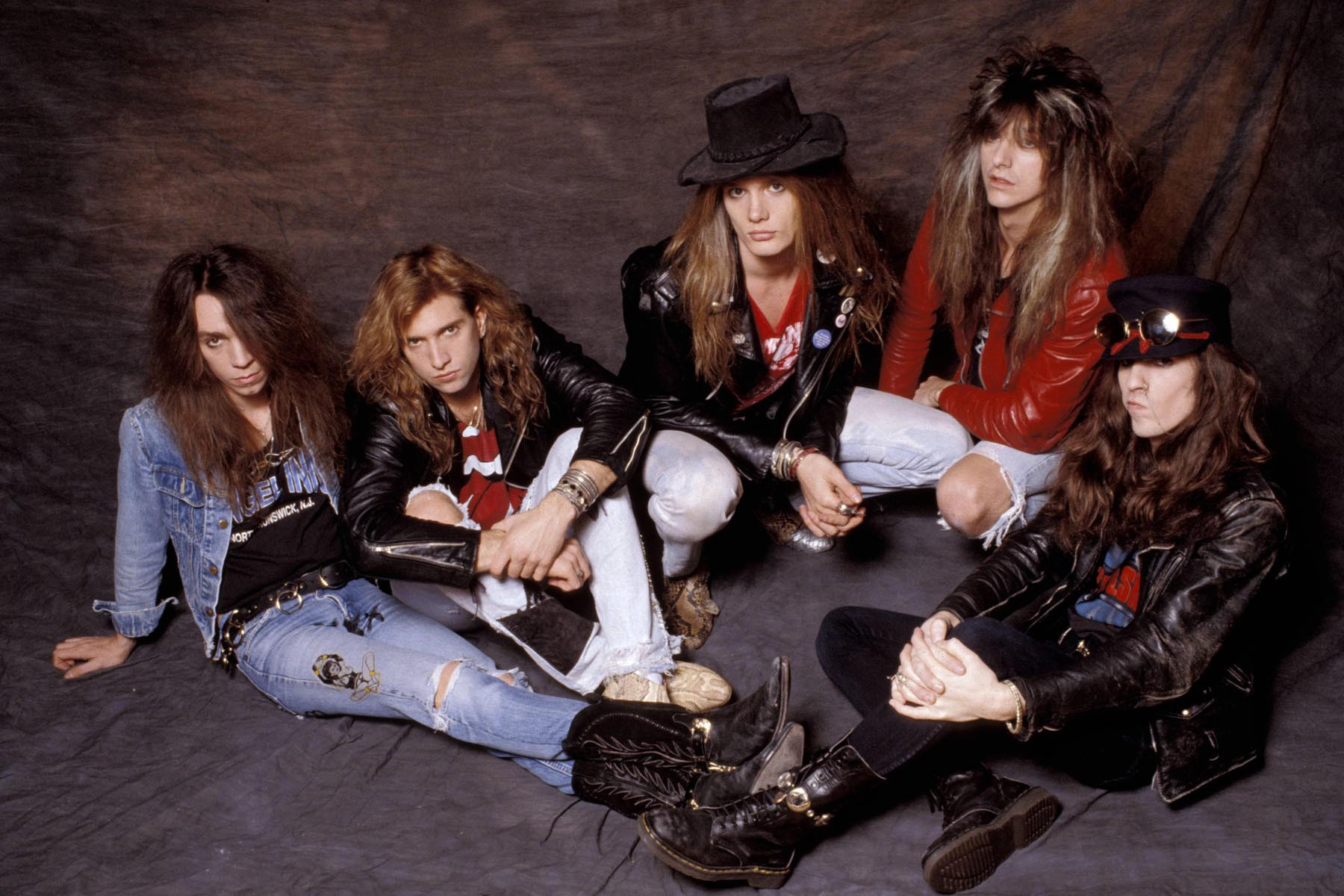 (MANDATORY CREDIT Krasner/Trebitz/Getty Images) UNITED STATES – JANUARY 01: Photo of SKID ROW (Photo by Krasner/Trebitz/Redferns)Image Credit: Krasner/Trebitz/Redferns/Getty Images
(MANDATORY CREDIT Krasner/Trebitz/Getty Images) UNITED STATES – JANUARY 01: Photo of SKID ROW (Photo by Krasner/Trebitz/Redferns)Image Credit: Krasner/Trebitz/Redferns/Getty Images
Skid Row achieved mainstream success with power ballads, but “Youth Gone Wild” resonated deeply with the metal crowd. Though written by guitarists Dave Sabo and Rachel Bolan, it was Sebastian Bach’s charismatic vocals that transformed “Youth Gone Wild” into a rebellion anthem. Bach’s ferocious delivery and stage presence solidified his star status. “Youth Gone Wild” became an anthem for youthful rebellion and a defining heavy metal song of the late 1980s/early 1990s hair metal era. Bach’s personal connection to the song, even before the band’s success, underscores the power of belief and passion in creating iconic heavy metal songs.
‘Chopped in Half,’ Obituary
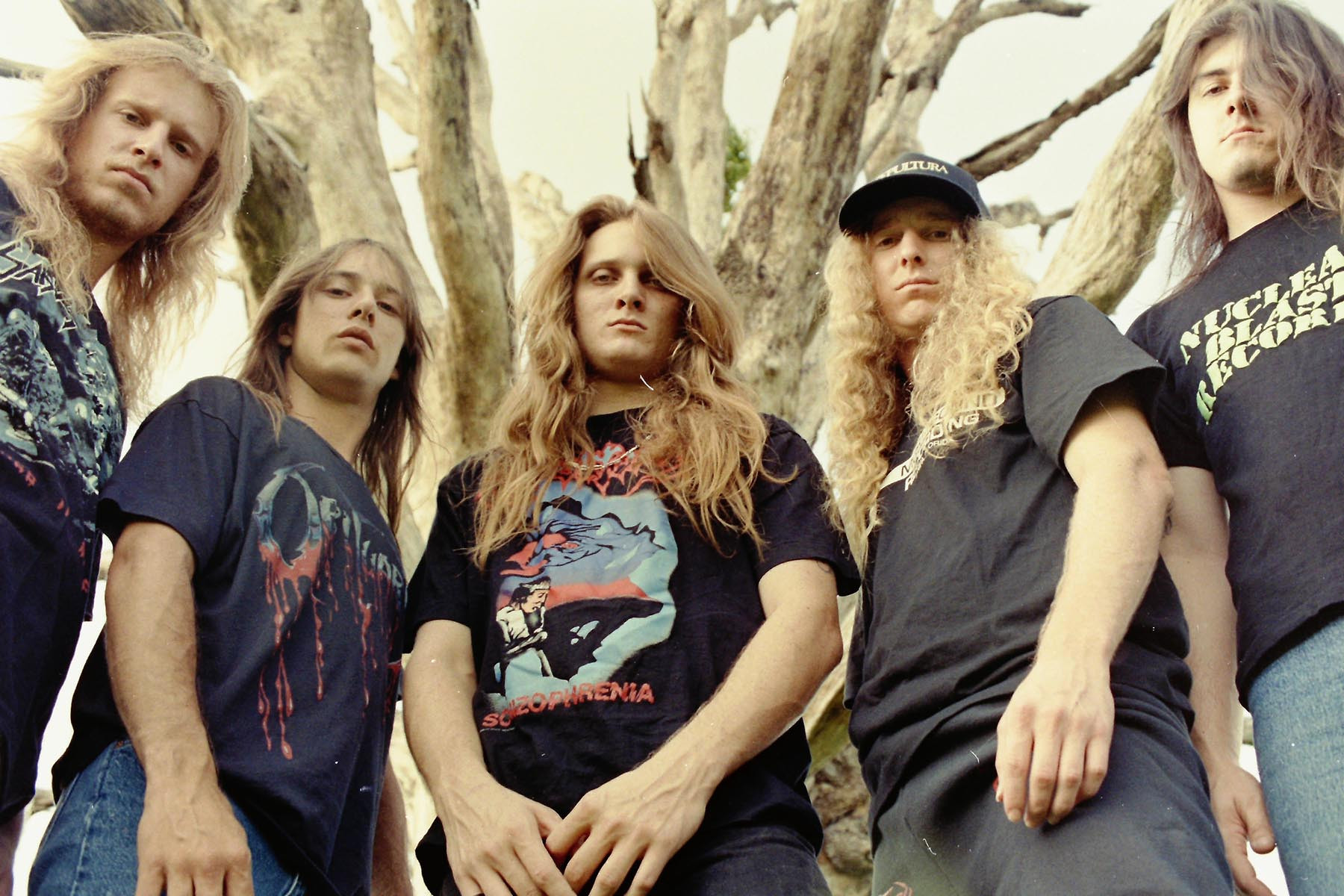 Image Credit: Tim Hubbard
Image Credit: Tim Hubbard
Obituary, Florida death metal pioneers, delivered peak death metal with “Chopped in Half” from their 1990 album Cause of Death. Refining their sound while retaining raw intensity, Obituary’s sound featured oozing grooves, Southern swagger, and pummeling riffs. Vocalist Donald Tardy described Cause of Death as defining “death metal,” and “Chopped in Half” as its crowning jewel. The song is a quintessential 1990s death metal track, impossibly heavy and brutally anthemic. “Chopped in Half” embodies the extreme and visceral nature of death metal songs and their dedication to sonic brutality.
‘Du Hast,’ Rammstein
 Rammstein, portrait, Melkweg, Amsterdam, Netherlands, 4th September 1997. (Photo by Niels van Iperen/Getty Images)Image Credit: Niels van Iperen/Getty Images
Rammstein, portrait, Melkweg, Amsterdam, Netherlands, 4th September 1997. (Photo by Niels van Iperen/Getty Images)Image Credit: Niels van Iperen/Getty Images
Rammstein’s “Du Hast,” a 1997 single, became an unlikely global breakthrough for industrial metal in the nu metal era. The song’s thudding, danceable rhythm and industrial edge gained mainstream appeal, even leading to Lizzo covering it. Guitarist Richard Kruspe described the song as being about loyalty, reflecting the band’s commitment to each other. “Du Hast” demonstrates the surprising global appeal of heavy metal songs, even those with German lyrics, and the genre’s ability to incorporate industrial and electronic elements while achieving mainstream crossover success.
‘You Suffer,’ Napalm Death
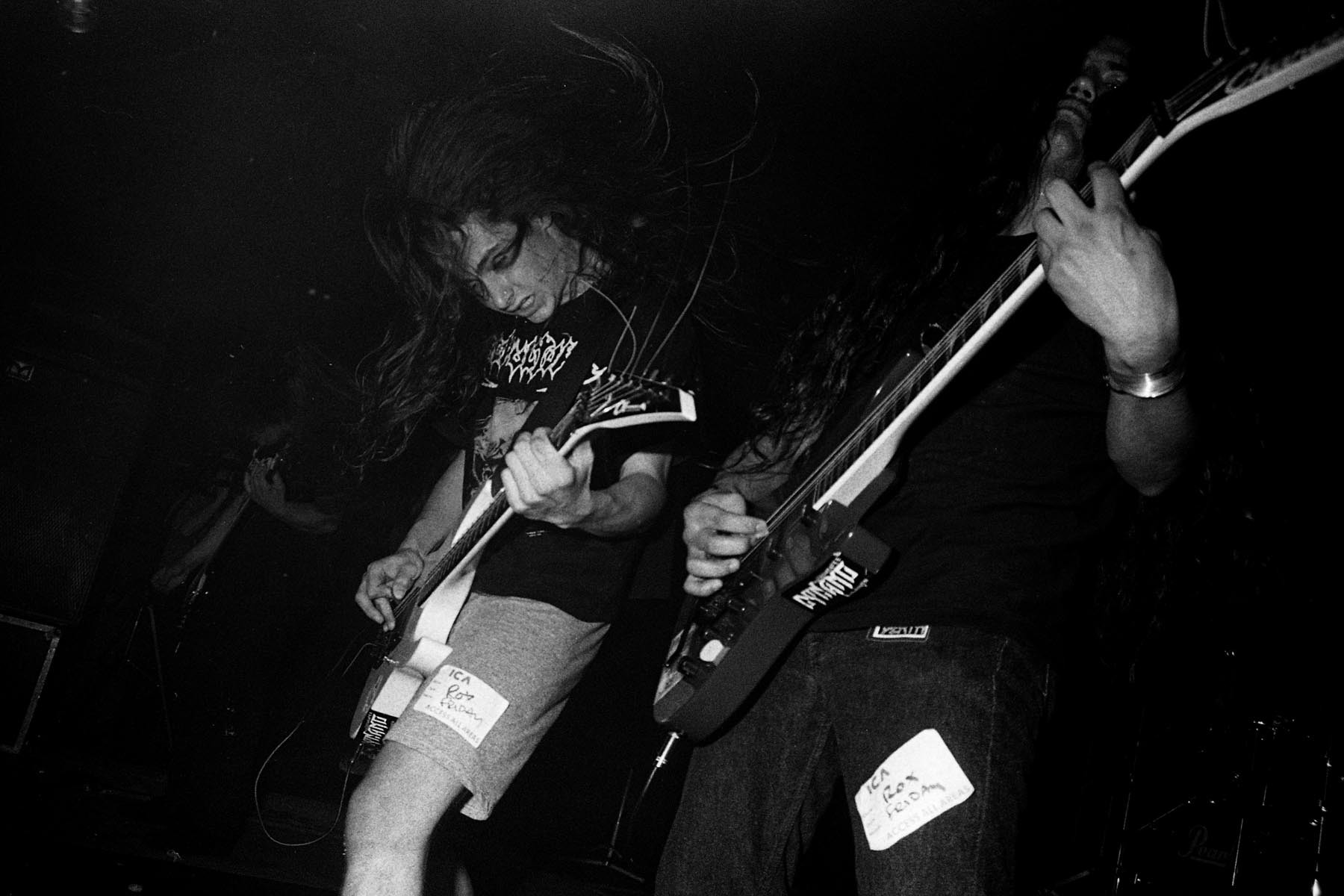 Napalm Death perform on stage at the ICA, London, United Kingdom, 1990. (Photo by Martyn Goodacre/Getty Images)Image Credit: Martyn Goodacre/Getty Images
Napalm Death perform on stage at the ICA, London, United Kingdom, 1990. (Photo by Martyn Goodacre/Getty Images)Image Credit: Martyn Goodacre/Getty Images
Napalm Death’s “You Suffer” is grindcore distilled to its extreme essence. From their 1987 debut Scum, the Guinness record-holding 1.316-second track began as a joke but became a perfect encapsulation of grindcore’s nihilistic fury. The four-word lyrics, “You suffer / But why?”, are a concise commentary on existential futility. Opeth’s Mikael Åkerfeldt praised the song’s succinctness and impactful message. “You Suffer” is a testament to the extreme brevity and intensity that heavy metal songs can achieve, pushing the boundaries of musical form and lyrical conciseness.
‘Blood and Thunder,’ Mastodon
 UNITED KINGDOM – FEBRUARY 16: MEAN FIDDLER Photo of MASTODON and MASTADON (Photo by Nigel Crane/Redferns)Image Credit: Nigel Crane/Redferns/Getty Images
UNITED KINGDOM – FEBRUARY 16: MEAN FIDDLER Photo of MASTODON and MASTADON (Photo by Nigel Crane/Redferns)Image Credit: Nigel Crane/Redferns/Getty Images
Mastodon’s “Blood and Thunder” is a concept song inspired by Herman Melville’s Moby-Dick. Drummer Brann Dailor conceived the song, drawing lyrical inspiration directly from the novel and musical inspiration from Egyptian pop music. The central riff and bridge incorporate these diverse influences. “Blood and Thunder” became a driving, pummeling hit for Mastodon, showcasing their conceptual approach to heavy metal songs and their ability to blend diverse musical influences into a cohesive and powerful sound.
‘Flying Whales,’ Gojira
 UNITED KINGDOM – OCTOBER 10: ZODIAC Photo of GOJIRA, Col. Posed (Photo by Naki/Redferns)Image Credit: Naki/Redferns/Getty Images
UNITED KINGDOM – OCTOBER 10: ZODIAC Photo of GOJIRA, Col. Posed (Photo by Naki/Redferns)Image Credit: Naki/Redferns/Getty Images
Gojira’s “Flying Whales,” despite whale samples, was written before singer-guitarist Joe Duplantier had seen a whale. From their breakthrough album From Mars to Sirius, the song became an environmentalist anthem. Lyrics envision whales fleeing to space, reflecting climatological anxieties. The song’s dynamic shifts and rhythmic complexity underscore the urgency of its message. “Flying Whales” demonstrates how heavy metal songs can address environmental themes and social consciousness, blending intense music with messages of hope and despair.
‘Evil,’ Mercyful Fate
 LONDON – 1st MARCH: Danish Heavy Metal band Mercyful Fate posed in London in March 1983. Left to Right: Hank Shermann, Michael Denner, King Diamond, Kim Ruzz, Timi Hansen (1958 – 2019). (Photo by Fin Costello/Redferns)Image Credit: Fin Costello/Redferns/Getty Images
LONDON – 1st MARCH: Danish Heavy Metal band Mercyful Fate posed in London in March 1983. Left to Right: Hank Shermann, Michael Denner, King Diamond, Kim Ruzz, Timi Hansen (1958 – 2019). (Photo by Fin Costello/Redferns)Image Credit: Fin Costello/Redferns/Getty Images
Mercyful Fate’s “Evil,” opening their debut album Melissa, lived up to the band’s rumored dark image. King Diamond’s dramatic vocals and the band’s assertive riffing created a theatrical and unsettling atmosphere. Lyrics, opening with “I was born on the cemetery,” and themes of necrophilia were delivered with liturgical solemnity. “Evil” showcased Mercyful Fate’s songwriting skill alongside their shock value, blending groove, melody, and dynamics. The song solidified Mercyful Fate’s reputation for theatrical and Satanic heavy metal songs, blending shock value with musical craftsmanship.
‘Runnin’ With the Devil,’ Van Halen
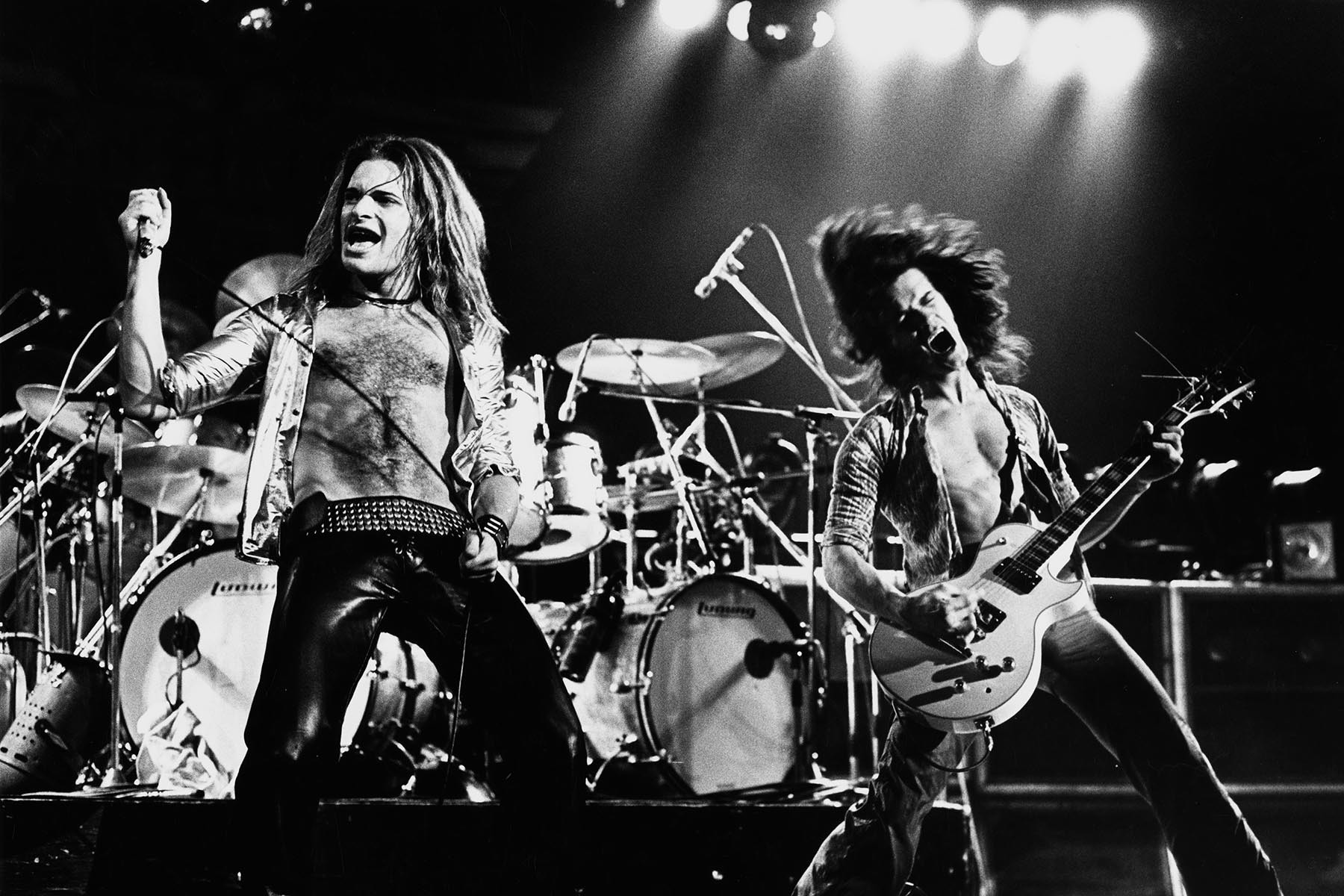 American singer-songwriter and musician David Lee Roth and Dutch-American musician, songwriter, producer, and inventor Eddie Van Halen performing live with rock band Van Halen, 1978. (Photo by Gus Stewart/Getty Images)Image Credit: Gus Stewart/Getty Images
American singer-songwriter and musician David Lee Roth and Dutch-American musician, songwriter, producer, and inventor Eddie Van Halen performing live with rock band Van Halen, 1978. (Photo by Gus Stewart/Getty Images)Image Credit: Gus Stewart/Getty Images
Van Halen’s “Runnin’ With the Devil,” from their 1978 debut, is darker than their later good-time hard rock. Eddie Van Halen’s guitar work is restrained, building tension. David Lee Roth’s grim lyrics contrast with his later persona, espousing a street-hardened worldview. The song’s chorus conveys a message of “Satanic solidarity,” creating a sense of foreboding power. “Runnin’ With the Devil” showcased a darker, more menacing side of Van Halen early in their career, demonstrating the range and depth within their heavy metal songs.
‘Blind,’ Korn
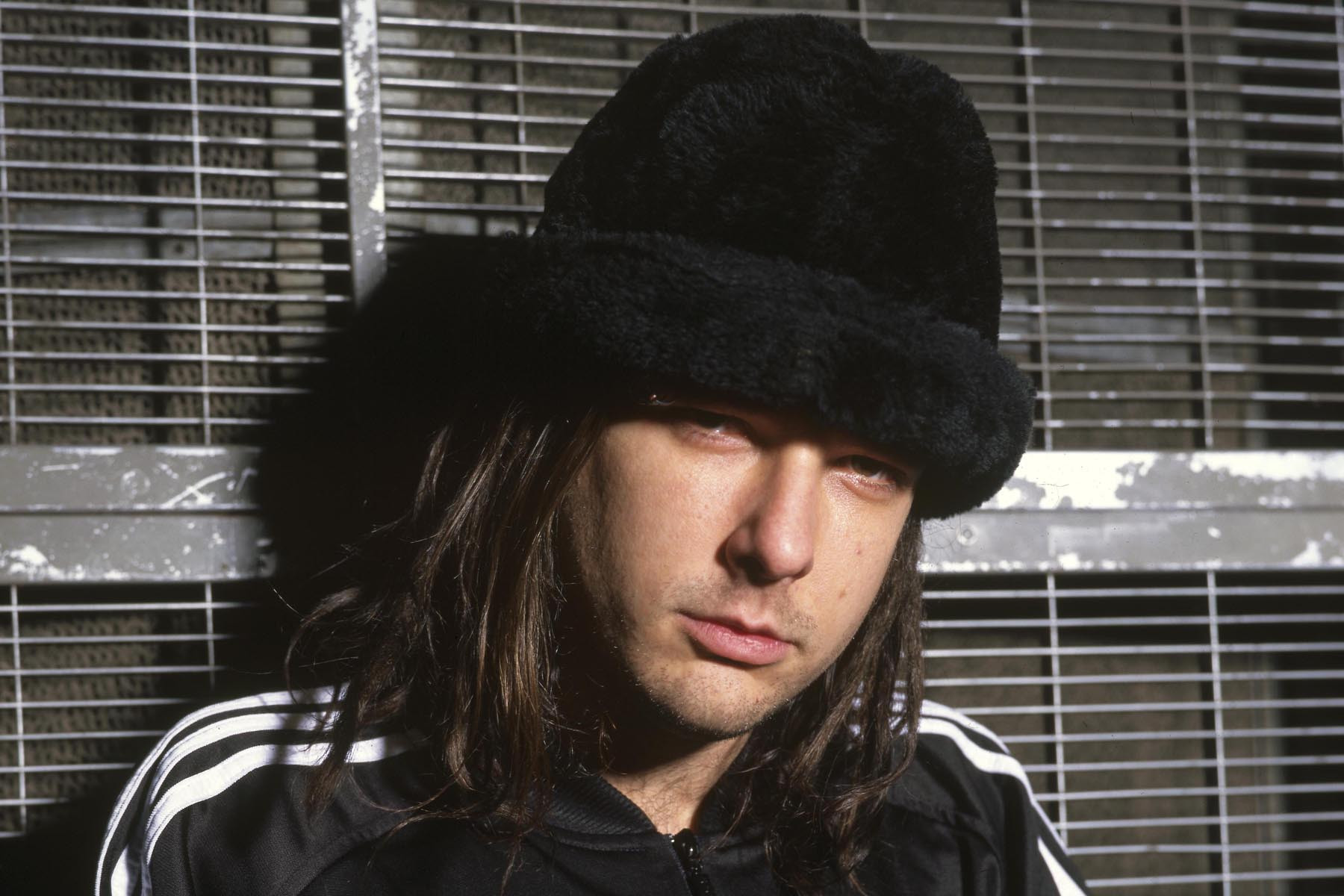 UNSPECIFIED – JANUARY 01: Photo of KORN and Jonathan DAVIS; Posed portrait of Jonathan Davis (Photo by Mick Hutson/Redferns)Image Credit: Mick Hutson/Redferns/Getty Images
UNSPECIFIED – JANUARY 01: Photo of KORN and Jonathan DAVIS; Posed portrait of Jonathan Davis (Photo by Mick Hutson/Redferns)Image Credit: Mick Hutson/Redferns/Getty Images
Korn’s “Blind,” originally written for Jonathan Davis’ previous band Sexart, launched Korn and helped usher in nu metal. The lead single from their debut album is full of twists and shocks, with Davis’s tense vocals ranging from restraint to screams. The music blends groove and sludge, influenced by grunge and rap. The opening line, “Are you ready?“, is delivered with intense necessity. “Blind” is a seminal nu metal song, showcasing Korn’s innovative sound and Davis’s intensely personal and volatile vocal style, marking a turning point in heavy metal’s evolution.
‘Bang Your Head (Metal Health),’ Quiet Riot
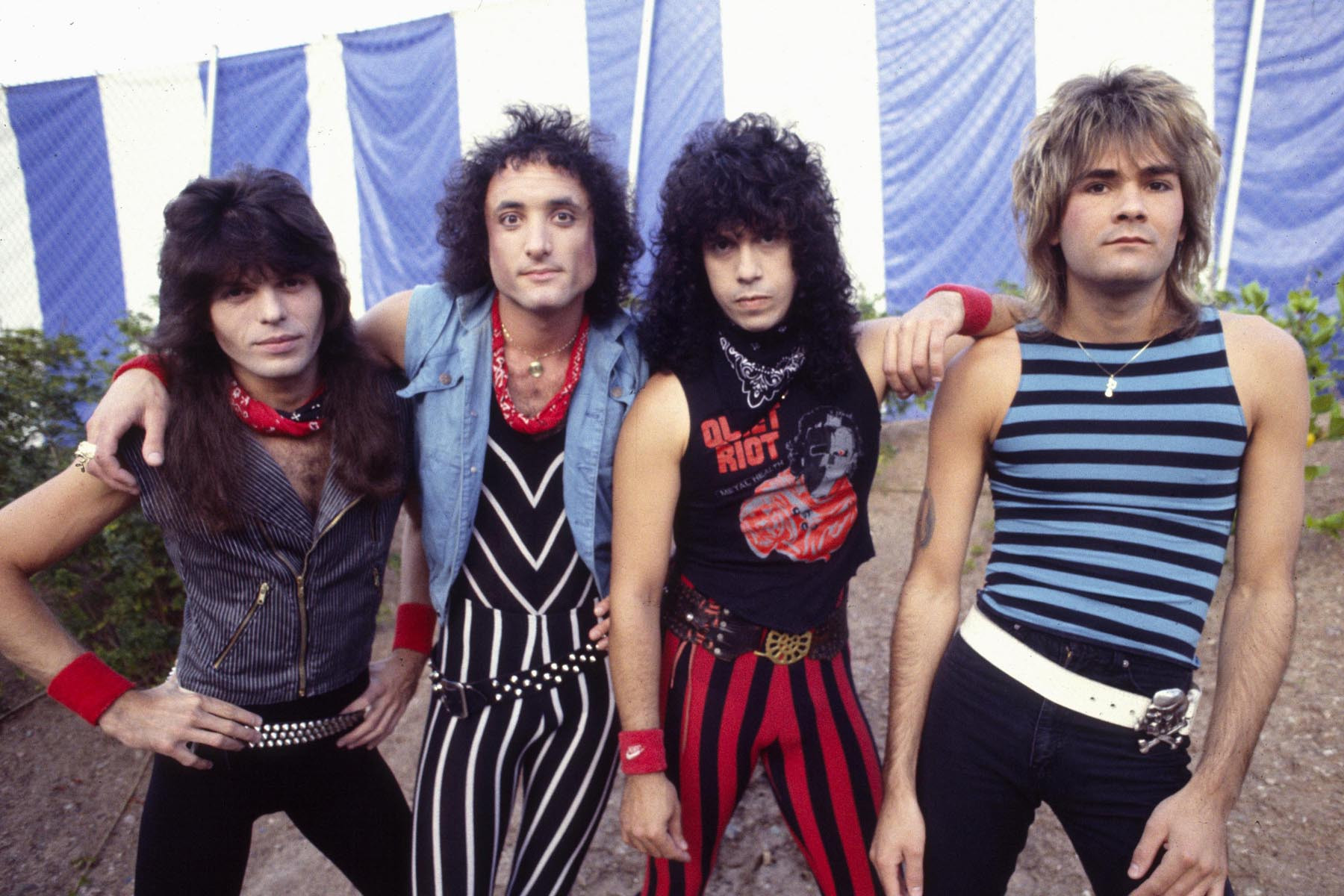 Quiet Riot 1983 Rudy Sarzo, Kevin DuBrow, Frankie Banali, Carlos Cavazo (Photo by Chris Walter/WireImage)Image Credit: Chris Walter/WireImage
Quiet Riot 1983 Rudy Sarzo, Kevin DuBrow, Frankie Banali, Carlos Cavazo (Photo by Chris Walter/WireImage)Image Credit: Chris Walter/WireImage
Quiet Riot’s “Bang Your Head (Metal Health),” from their 1983 album Metal Health, became a metal anthem and propelled the album to Number One on the Billboard 200, the first metal LP to achieve this. While their cover of Slade’s “Cum on Feel the Noize” gained radio play, the title track solidified their place in metal hearts. Bassist Rudy Sarzo described the band’s long climb to success. The song features a monster riff by Carlos Cavazo, skull-rattling drums by Frankie Banali, and Kevin DuBrow’s bombastic vocals. “Bang Your Head (Metal Health)” became a defining anthem of the 1980s metal scene and a testament to Quiet Riot’s perseverance and impact.
‘Over My Head,’ King’s X
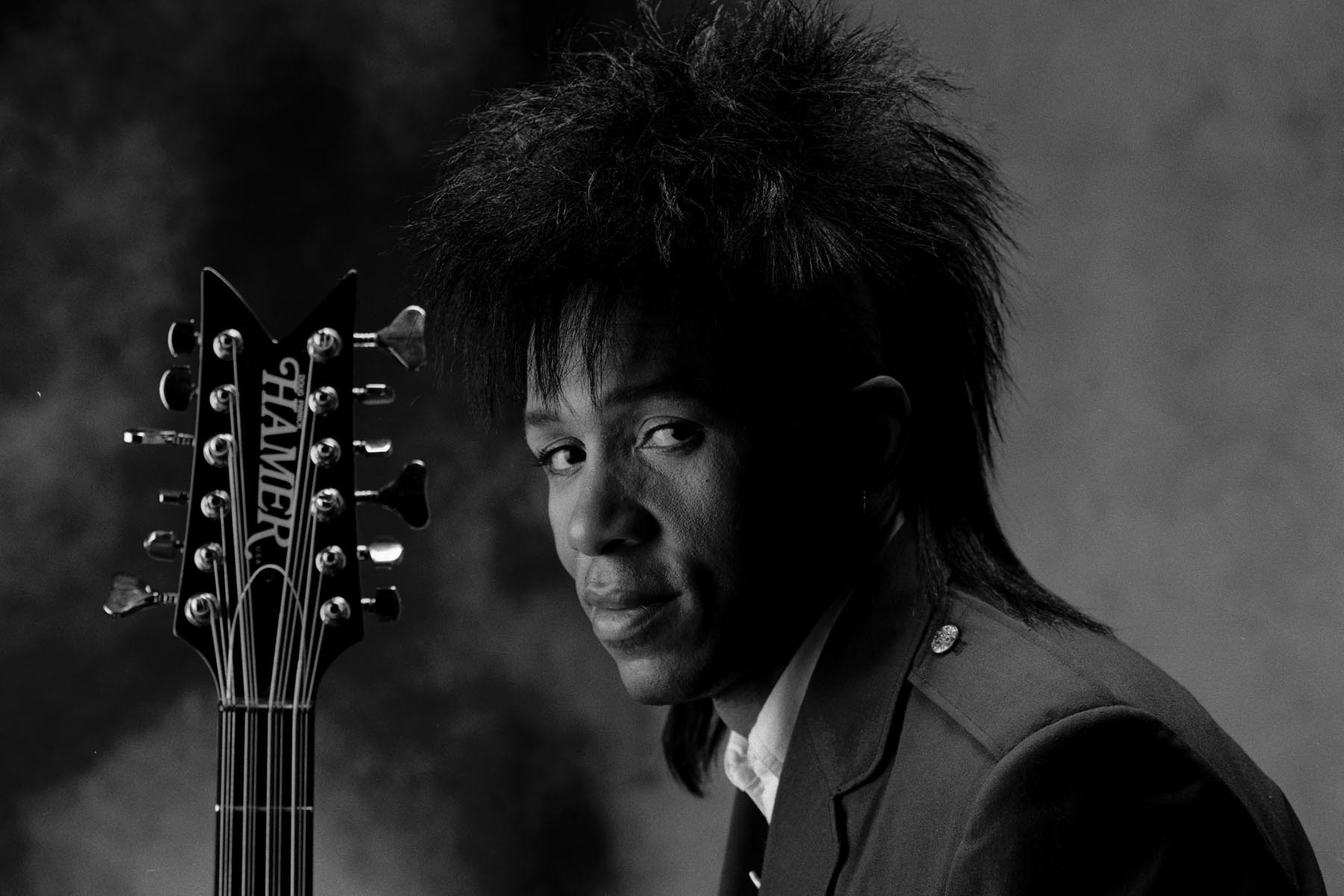 Portrait of Doug Pinnick of Kings X in a photo studio in Chicago, Illinois, September 20, 1991. (Photo by Paul Natkin/Getty Images)Image Credit: Paul Natkin/Getty Images
Portrait of Doug Pinnick of Kings X in a photo studio in Chicago, Illinois, September 20, 1991. (Photo by Paul Natkin/Getty Images)Image Credit: Paul Natkin/Getty Images
King’s X’s “Over My Head” is inspired by two other songs: the gospel song “Over My Head” and Lenny Kravitz’s “Let Love Rule.” Bassist dUg Pinnick drew from memories of his grandmother singing the gospel song and Kravitz’s anticlimactic chorus. King’s X opted for groove over a typical anthemic chorus, creating an ethereal and unique sound. “Over My Head” showcases King’s X’s musical eclecticism and their ability to blend diverse influences, resulting in heavy metal songs that are both grounded and spiritually evocative.
‘Black No. 1 (Little Miss Scare-All),’ Type O Negative
 UNSPECIFIED – JANUARY 01: Photo of TYPE O NEGATIVE (Photo by Mick Hutson/Redferns)Image Credit: Mick Hutson/Redferns/Getty Images
UNSPECIFIED – JANUARY 01: Photo of TYPE O NEGATIVE (Photo by Mick Hutson/Redferns)Image Credit: Mick Hutson/Redferns/Getty Images
Type O Negative’s “Black No. 1 (Little Miss Scare-All)” is a tongue-in-cheek gothic metal anthem. Despite their doom-laden sound, Type O Negative embraced humor. “Black No. 1” satirizes goth tropes with seriousness, referencing Nosferatu and Lily Munster, set to a grandiose soundtrack featuring harpsichord and rollicking riffs. Pete Steele’s baritone vocals deliver the lyrics with mock-seriousness. “Black No. 1 (Little Miss Scare All)” became an iconic track in American gothic metal, showcasing Type O Negative’s unique blend of humor, gloom, and musical grandeur.
‘Summertime Blues,’ Blue Cheer
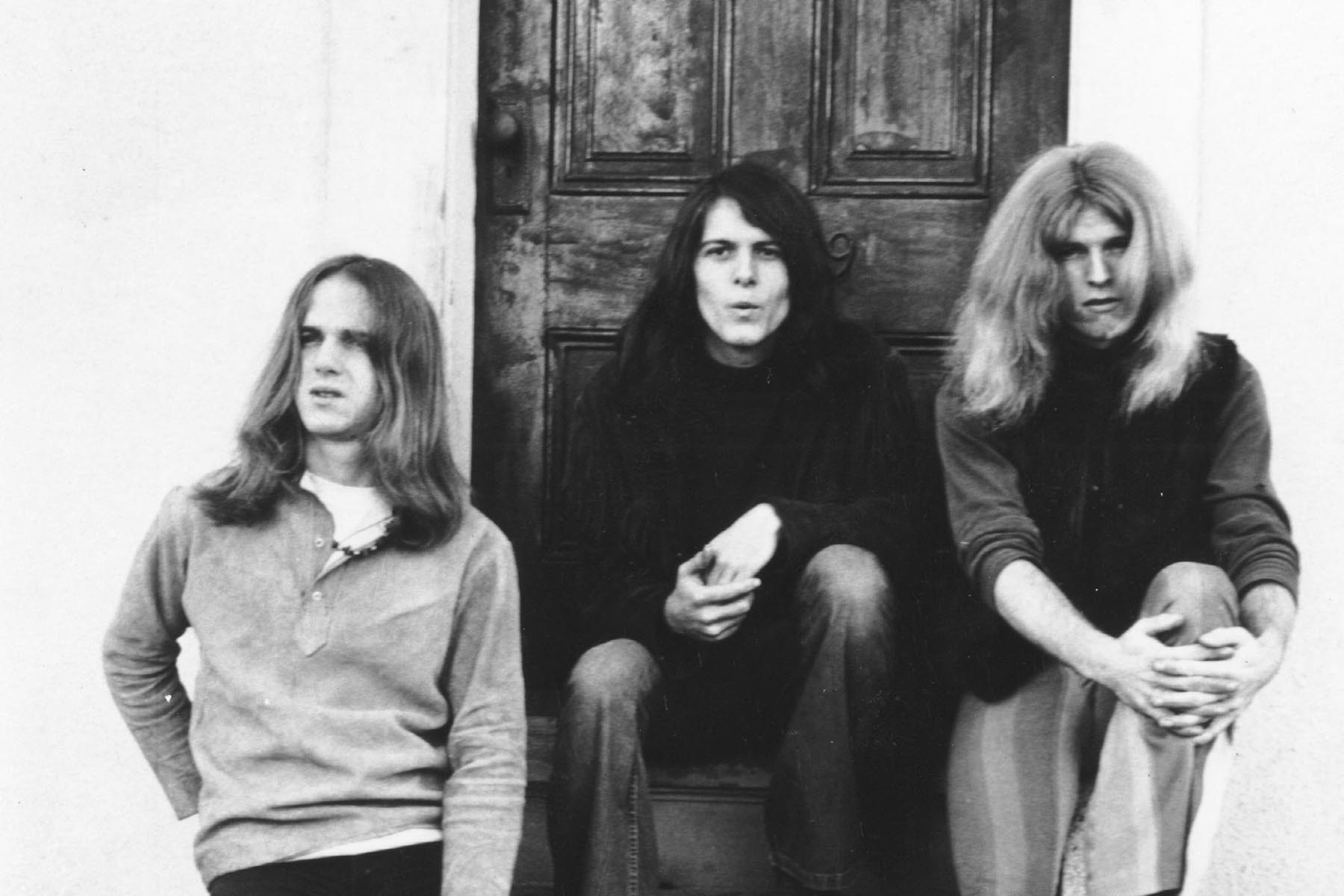 UNSPECIFIED – CIRCA 1970: Photo of Blue Cheer Photo by Michael Ochs Archives/Getty ImagesImage Credit: Michael Ochs Archives/Getty Images
UNSPECIFIED – CIRCA 1970: Photo of Blue Cheer Photo by Michael Ochs Archives/Getty ImagesImage Credit: Michael Ochs Archives/Getty Images
Blue Cheer’s cover of “Summertime Blues” is often credited as the first heavy metal song. Their bludgeoning, distorted rendition of Eddie Cochran’s anthem predates Black Sabbath’s chart success by two years. Blue Cheer paved the way for stoner, doom, and other heavy genres. Neil Peart of Rush cited Blue Cheer as an early influence. “Summertime Blues” in Blue Cheer’s hands became a foundational heavy metal song, demonstrating the power of distortion and raw volume in transforming a classic into something heavier and groundbreaking.
‘Dragonaut,’ Sleep
 MINEHEAD, UNITED KINGDOM- MAY 10: Al Cisneros of Sleep performs on stage at Butlins Holiday Centre on May 10, 2009 in Minehead, England. (Photo by Barney Britton/Redferns)Image Credit: Barney Britton/Redferns/Getty Images
MINEHEAD, UNITED KINGDOM- MAY 10: Al Cisneros of Sleep performs on stage at Butlins Holiday Centre on May 10, 2009 in Minehead, England. (Photo by Barney Britton/Redferns)Image Credit: Barney Britton/Redferns/Getty Images
Sleep’s “Dragonaut,” from 1993’s Sleep’s Holy Mountain, is a doom metal classic. While known for their 63-minute single-song album Dopesmoker, “Dragonaut” showcases the purest form of their pot-fueled sound. Matt Pike’s “Into the Void”-esque riff kicks off the song, a paean to cosmic warriors riding dragons. The song blends sludge metal with sci-fi and fantasy themes. Pike acknowledged Black Sabbath’s influence but also cited dub music and “endless amounts of pot” as inspirations. “Dragonaut” is a quintessential stoner/doom heavy metal song, blending heavy riffs with escapist and psychedelic themes.
‘We Will Rise,’ Arch Enemy
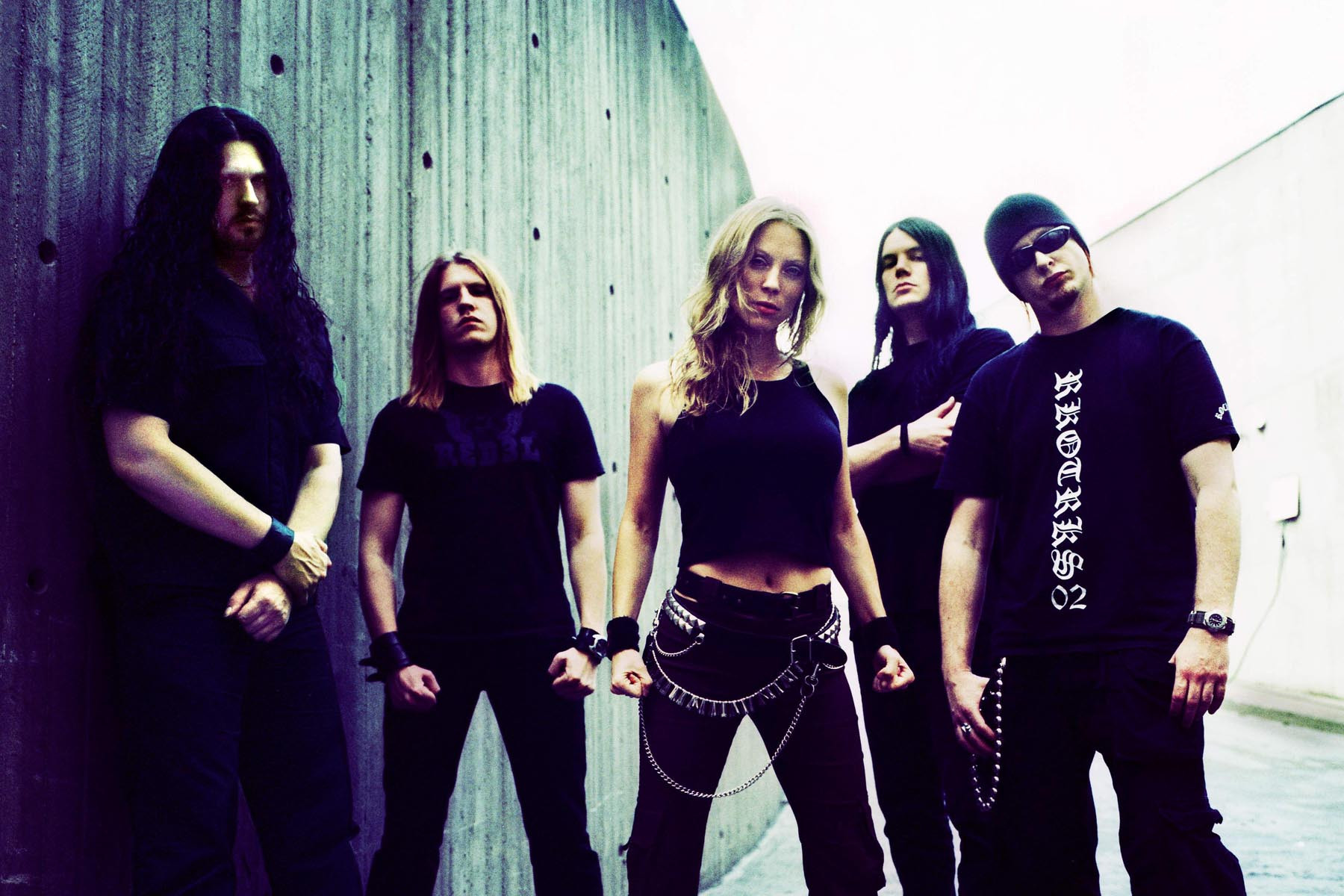 SWEDEN – JUNE 10: Photo of ARCH ENEMY (Photo by Mick Hutson/Redferns)Image Credit: Mick Hutson/Redferns/Getty Images
SWEDEN – JUNE 10: Photo of ARCH ENEMY (Photo by Mick Hutson/Redferns)Image Credit: Mick Hutson/Redferns/Getty Images
Arch Enemy’s “We Will Rise,” from their 2003 breakthrough Anthems of Rebellion, is a melodic death metal highlight. Daniel Erlandsson’s drumming, the Amott brothers’ layered guitars, and Angela Gossow’s venomous vocals create a blend of uplift and menace. Lyrics encourage empowerment and defiance. Gossow’s delivery transforms self-affirmation into a threat. “We Will Rise” exemplifies the melodic death metal boom of the early 2000s, showcasing the genre’s capacity for both aggression and empowering messages.
‘People = Shit,’ Slipknot
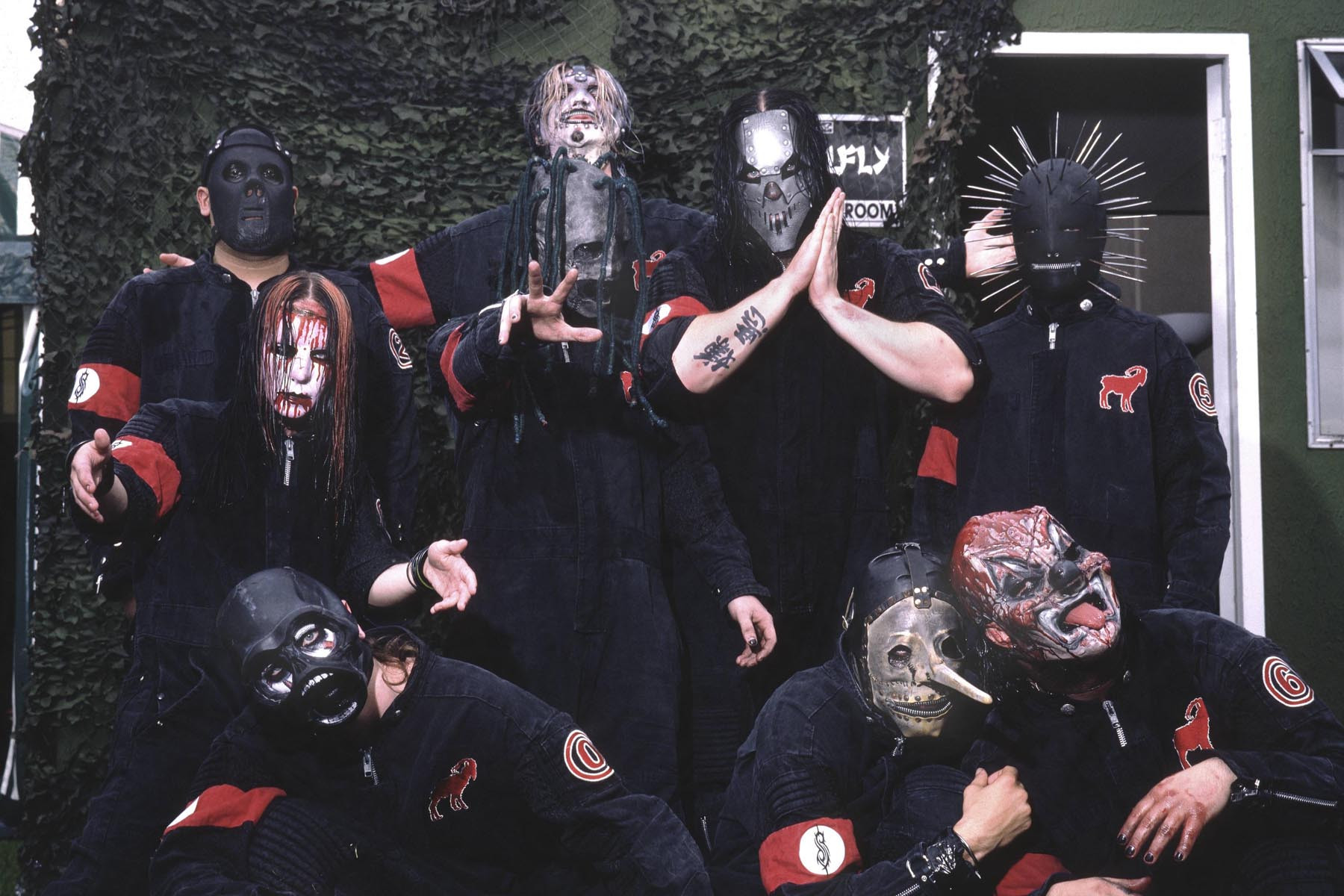 UNITED STATES – JANUARY 01: USA Photo of SLIPKNOT (Photo by Mick Hutson/Redferns)Image Credit: Mick Hutson/Redferns/Getty Images
UNITED STATES – JANUARY 01: USA Photo of SLIPKNOT (Photo by Mick Hutson/Redferns)Image Credit: Mick Hutson/Redferns/Getty Images
Slipknot’s “People = Shit” encapsulates their hate-everything worldview. Emerging from Iowa in the late 1990s, Slipknot’s masked extremism became an Ozzfest sensation. “People = Shit” is a nu metal maelstrom, a statement of tribal misanthropy and outcast self-determination. Joey Jordison described Slipknot’s music as stemming from “everything that I hate about everything in the world.” “People = Shit” is a raw and visceral expression of negativity and rebellion, defining Slipknot’s extreme nu metal sound.
‘Freezing Moon,’ Mayhem
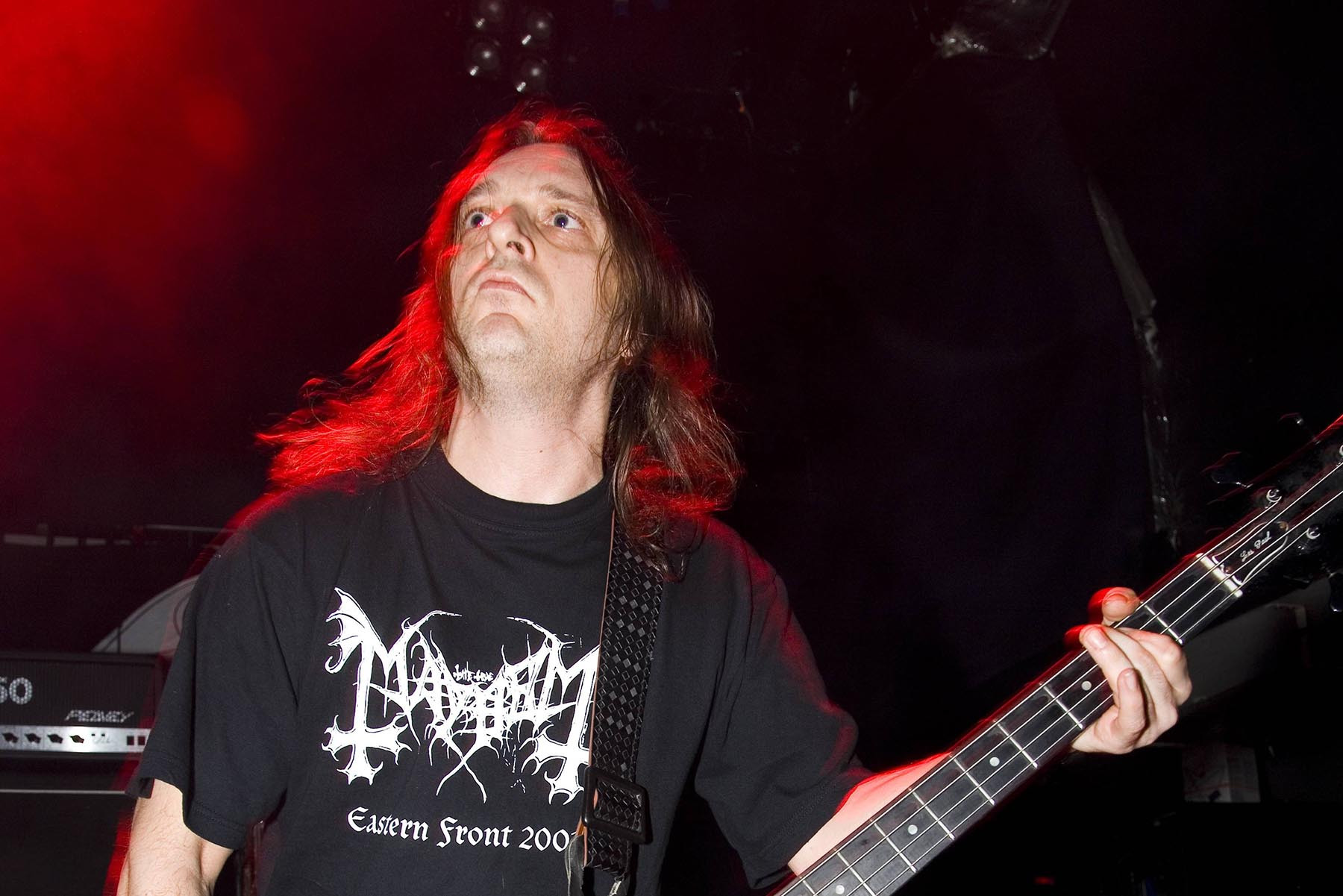 UNITED KINGDOM – FEBRUARY 21: ISLINGTON ACADEMY Photo of MAYHEM and NECROBUTCHER and Jorn STUBBERUD, Necrobutcher (Jorn Stubberud) performing on stage (Photo by Naki/Redferns)Image Credit: Naki/Redferns/Getty Images
UNITED KINGDOM – FEBRUARY 21: ISLINGTON ACADEMY Photo of MAYHEM and NECROBUTCHER and Jorn STUBBERUD, Necrobutcher (Jorn Stubberud) performing on stage (Photo by Naki/Redferns)Image Credit: Naki/Redferns/Getty Images
Mayhem’s “Freezing Moon” is a defining anthem of black metal. Written by vocalist Dead, the lyrics explore a vengeful ghost’s perspective. Dead died by suicide before recording, and Attila Csihar of Tormentor was enlisted to record vocals. The result, with its funereal riff, cryospheric lyrics, and seesawing drums, became a black metal monument. Euronymous’ solo and Hellhammer’s drumming add to the song’s unsettling atmosphere. “Freezing Moon” is a foundational black metal song, embodying the genre’s darkness, intensity, and themes of death and suffering.
‘Refuse/Resist,’ Sepultura
 Sepultura, portrait, Belo Horizonte, Sao Paolo, Brazil, 15th January 1994. (Photo by Niels van Iperen/Getty Images)Image Credit: Niels van Iperen/Getty Images
Sepultura, portrait, Belo Horizonte, Sao Paolo, Brazil, 15th January 1994. (Photo by Niels van Iperen/Getty Images)Image Credit: Niels van Iperen/Getty Images
Sepultura’s “Refuse/Resist” is a thrash anthem with Brazilian influences. Emerging from Brazil during a period of political transition, Sepultura’s thrash was inherently subversive. They incorporated Brazilian percussive grooves into their thrash style, creating a unique sound. Max Cavalera’s inspiration for the song came from seeing “Refuse/Resist” on a Black Panther’s jacket, evoking imagery of riots and chaos. “Refuse/Resist” blends thrash metal with Brazilian musical elements and a politically charged message, reflecting Sepultura’s unique cultural context and musical innovation.
‘The Cry of Mankind,’ My Dying Bride
 My Dying Bride, Aaron Stainthorpe, Graspop Metal Meeting Festival, Dessel, Belgium, 26th June 2004. (Photo by Gie Knaeps/Getty Images)Image Credit: Gie Knaeps/Getty Images
My Dying Bride, Aaron Stainthorpe, Graspop Metal Meeting Festival, Dessel, Belgium, 26th June 2004. (Photo by Gie Knaeps/Getty Images)Image Credit: Gie Knaeps/Getty Images
My Dying Bride’s “The Cry of Mankind” is a 12-minute doom metal epic. Evolving from guitarist Calvin Robertshaw’s melody, the song builds atmospherically. Singer Aaron Stainthorpe used a five-string violin to evoke a mournful ship’s horn. Lyrics, inspired by Byron, Keats, and Shakespeare, explore powerfully emotive subjects beyond typical metal themes. Stainthorpe aimed to write about “thought-provoking” subjects rather than “devil, blood, guts and mistreating women.” “The Cry of Mankind” is a doom metal masterpiece, showcasing My Dying Bride’s atmospheric depth, lyrical ambition, and willingness to explore complex emotions within heavy metal songs.
‘Bark at the Moon,’ Ozzy Osbourne
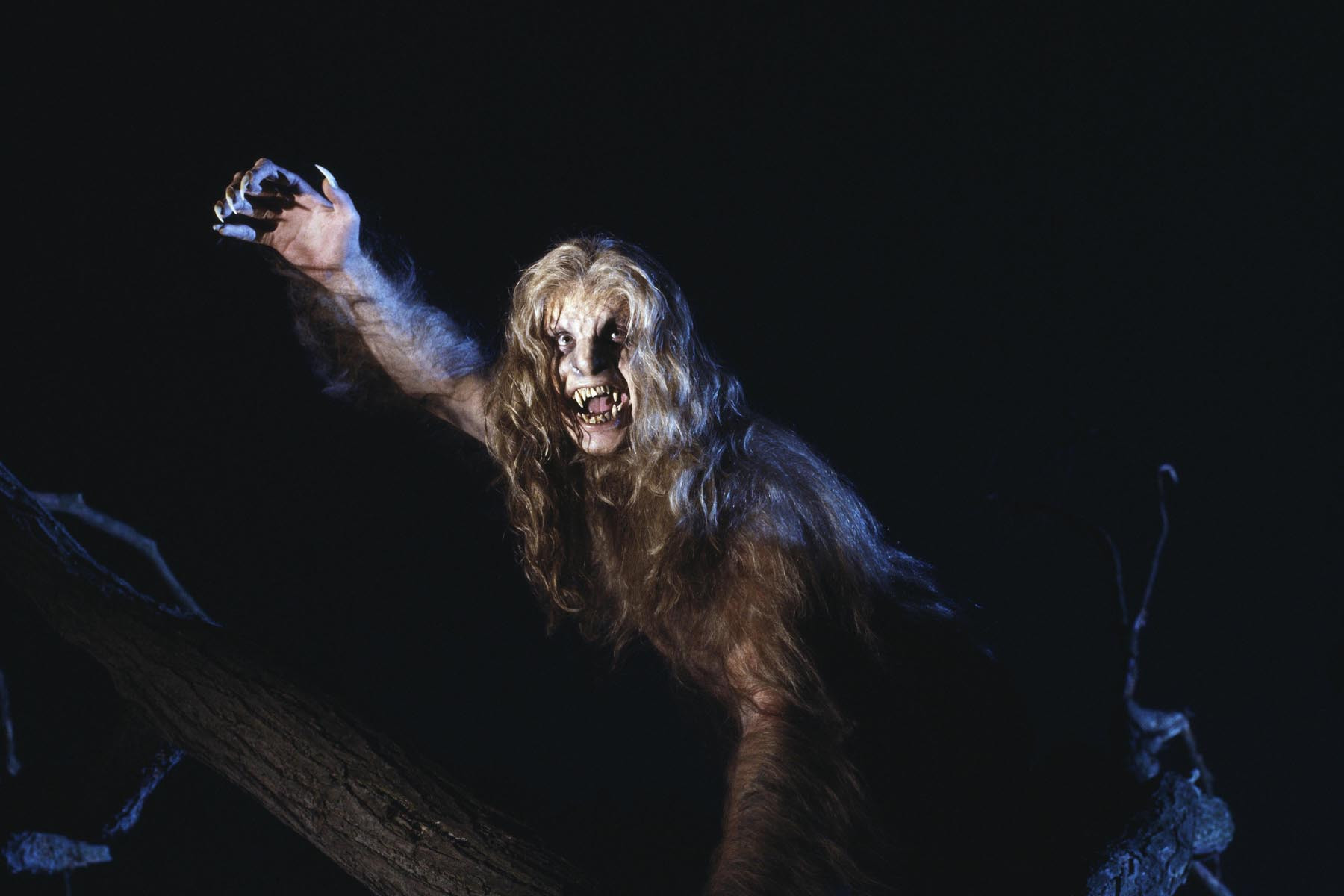 British singer-songwriter Ozzy Osbourne dressed as a werewolf during the Bark At The Moon video shoot, London, 1983.Image Credit: Fin Costello/Redferns/Getty Images
British singer-songwriter Ozzy Osbourne dressed as a werewolf during the Bark At The Moon video shoot, London, 1983.Image Credit: Fin Costello/Redferns/Getty Images
Ozzy Osbourne’s “Bark at the Moon” marked the arrival of guitarist Jake E. Lee after Randy Rhoads’ death. The title came from a joke Osbourne used to tell. The song, co-written with Lee, features a distinct staccato riff blending muscle and melody. Lyrics play up Osbourne’s “Prince of Darkness” persona with Hammer Horror themes, amplified by a werewolf-themed music video. “Bark at the Moon” revitalized Osbourne’s career and showcased Jake E. Lee’s guitar prowess, becoming a defining heavy metal song of the 1980s and solidifying Osbourne’s iconic status.
‘Caffeine,’ Faith No More
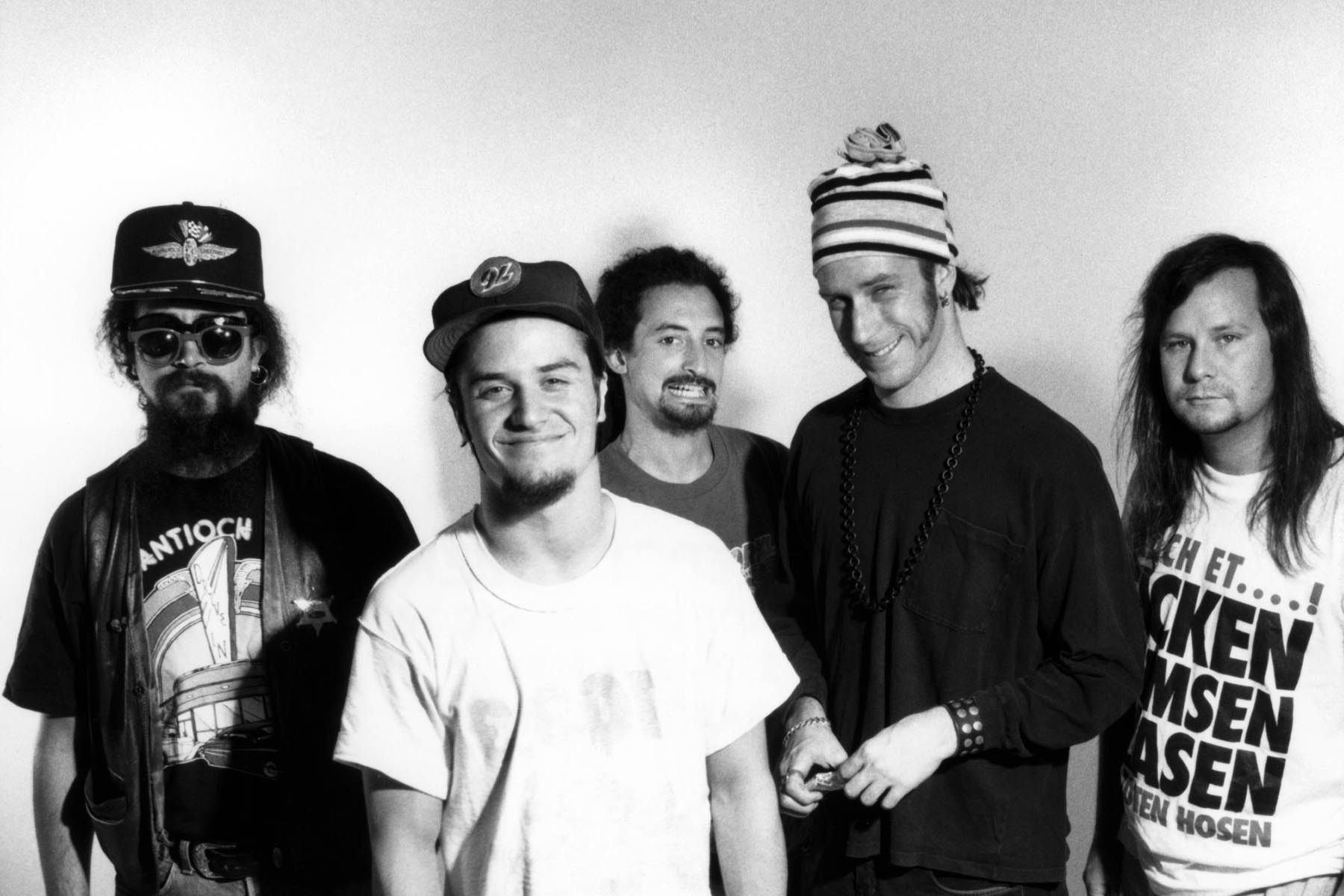 (MANDATORY CREDIT Ebet Roberts/Getty Images) UNITED STATES – JANUARY 01: Photo of FAITH NO MORE (Photo by Ebet Roberts/Redferns)Image Credit: Ebet Roberts/Redferns/Getty Images
(MANDATORY CREDIT Ebet Roberts/Getty Images) UNITED STATES – JANUARY 01: Photo of FAITH NO MORE (Photo by Ebet Roberts/Redferns)Image Credit: Ebet Roberts/Redferns/Getty Images
Faith No More’s “Caffeine,” from Angel Dust, is a hair-raising and heavy track exploring “the beautiful and the sick.” Musically upbeat, the song contrasts with dark lyrics. Mike Patton’s vocals range from slur-screaming to madness. Jim Martin’s guitar and Roddy Bottum’s synths create a theatrical backdrop for Patton’s lyrical descent. Patton reportedly wrote the lyrics during sleep deprivation, embodying societal autopilot. “Caffeine” is a unique and unsettling heavy metal song, blending musical complexity with dark lyrical themes and Patton’s theatrical vocal performance, showcasing Faith No More’s innovative approach.
‘Photograph,’ Def Leppard
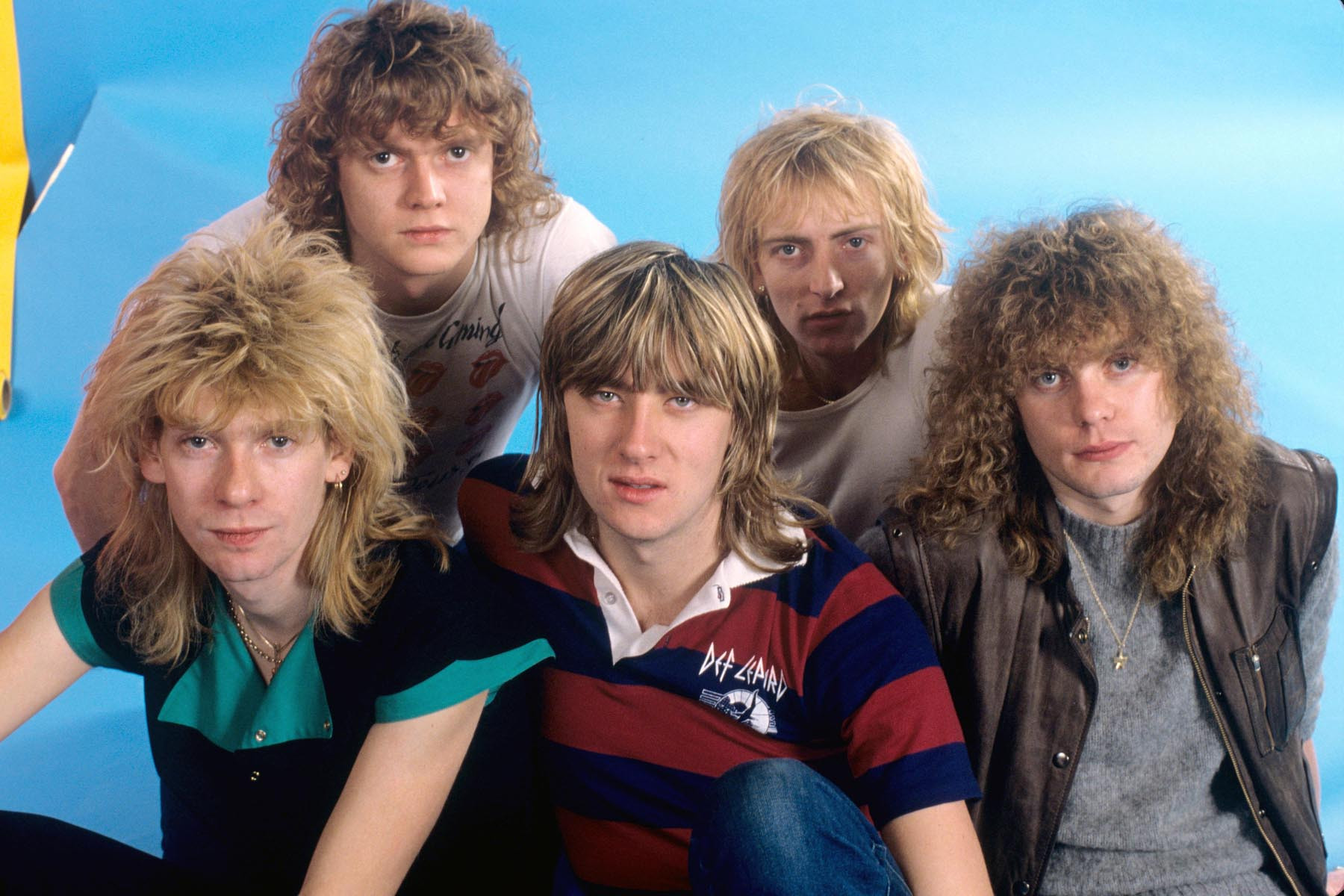 Def Leppard (v.l. Steve Clark, Rick Allen, Joe Elliot, Phil Collen, Rick Savage) on 01.12.1983 in Dortmund. (Photo by Fryderyk Gabowicz/picture alliance via Getty Images)Image Credit: Fryderyk Gabowicz/picture alliance/Getty Images
Def Leppard (v.l. Steve Clark, Rick Allen, Joe Elliot, Phil Collen, Rick Savage) on 01.12.1983 in Dortmund. (Photo by Fryderyk Gabowicz/picture alliance via Getty Images)Image Credit: Fryderyk Gabowicz/picture alliance/Getty Images
Def Leppard’s “Photograph,” from Pyromania, was their U.S. breakthrough. Emerging from the NWOBHM, Def Leppard became quintessential 1980s pop-metal, with catchy hooks and Mutt Lange’s polished production. “Photograph” features a strutting cowbell rhythm, Joe Elliott’s vocals, and a wistful melody. Def Leppard perfected the pop-metal formula, extending heavy metal’s reach to a wider audience. “Photograph” is a defining pop-metal heavy metal song of the 1980s, showcasing Def Leppard’s commercial appeal and songwriting craft.
‘Forty Six & 2,’ Tool
 American alternative rock band Tool with lead singer Maynard James Keenan performing at Paradiso, Amsterdam, Netherlands, 10th February 1997. (Photo by Paul Bergen/Redferns)Image Credit: Paul Bergen/Redferns/Getty Images
American alternative rock band Tool with lead singer Maynard James Keenan performing at Paradiso, Amsterdam, Netherlands, 10th February 1997. (Photo by Paul Bergen/Redferns)Image Credit: Paul Bergen/Redferns/Getty Images
Tool’s “Forty Six & 2,” from Ænima, marked a lyrical shift for Maynard James Keenan, incorporating esoteric research and psychological concepts. The song touches on Jungian shadow self and Drunvalo Melchizedek’s genetic mutation concept. Lyrics explore literal evolution. Musically, “Forty Six & 2” features stop-start syncopation and Justin Chancellor’s rhythmic bassline. Drummer Danny Carey highlighted Chancellor’s riff contributions and the song’s “spontaneous energy.” “Forty Six & 2” is a technically complex and lyrically ambitious heavy metal song, showcasing Tool’s intellectual depth and musical innovation.
‘Deliverance,’ Opeth
 UNSPECIFIED – JANUARY 01: Photo of OPETH; Posed portrait – L- R Peter Lindgren and Mikael Akerfeldt (Photo by Mick Hutson/Redferns)Image Credit: Mick Hutson/Redferns/Getty Images
UNSPECIFIED – JANUARY 01: Photo of OPETH; Posed portrait – L- R Peter Lindgren and Mikael Akerfeldt (Photo by Mick Hutson/Redferns)Image Credit: Mick Hutson/Redferns/Getty Images
Opeth’s “Deliverance” is a 13-minute epic encapsulating their diverse musical impulses. The song features a suite-like structure with shifting moods and meters, blending prog and death metal elements. Mikael Åkerfeldt’s vocals range from clean tenor to death metal growls. Martin Lopez’s drumming powers the track’s dynamic shifts. Despite its heaviness, Åkerfeldt jokingly acknowledged English rock bands could “beat us up any day.” “Deliverance” is a sprawling and dynamic heavy metal song, showcasing Opeth’s progressive songwriting, genre-bending approach, and musical virtuosity.
‘Slateman,’ Godflesh
 NEW YORK – OCTOBER 28: Justin Broadrick (right) and G.C. Green pose for a portrait on the set of their video production for “Crush My Soul” at the Angel Orensanz Foundation on October 28, 1994 in New York City, New York. (Photo by Karjean Levine/Getty Images)Image Credit: Karjean Levine/Getty Images
NEW YORK – OCTOBER 28: Justin Broadrick (right) and G.C. Green pose for a portrait on the set of their video production for “Crush My Soul” at the Angel Orensanz Foundation on October 28, 1994 in New York City, New York. (Photo by Karjean Levine/Getty Images)Image Credit: Karjean Levine/Getty Images
Godflesh’s “Slateman” captures internal turmoil and impressionistic metal potential. Justin K. Broadrick described himself as “weak” and “nervous,” reflected in the song’s atmosphere. The drum machine creates a merciless mechanical rhythm, and the guitars are “vicious.” Broadrick’s distant, wounded vocals add to the song’s vulnerability. “Slateman” is a unique heavy metal song that emphasizes vulnerability over power, showcasing Godflesh’s industrial sound and Broadrick’s introspective lyrical approach.
These heavy metal songs represent just a fraction of the genre’s vast and influential catalog. They showcase the evolution of heavy metal, its diverse subgenres, and its enduring power to connect with listeners on a profound level. From anthems of rebellion to explorations of darkness and despair, heavy metal songs continue to resonate with millions worldwide, proving that the Metal Age is far from over.


